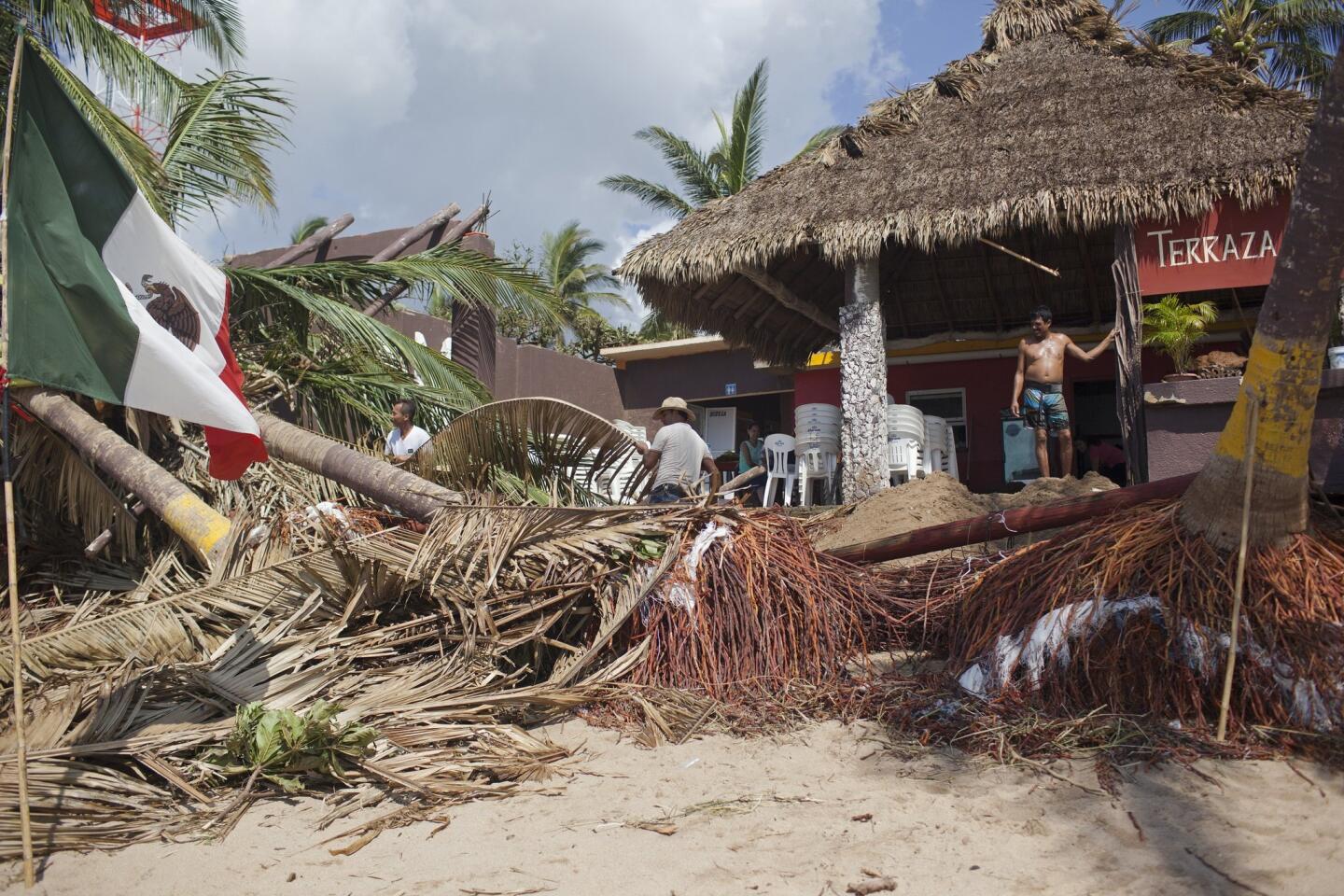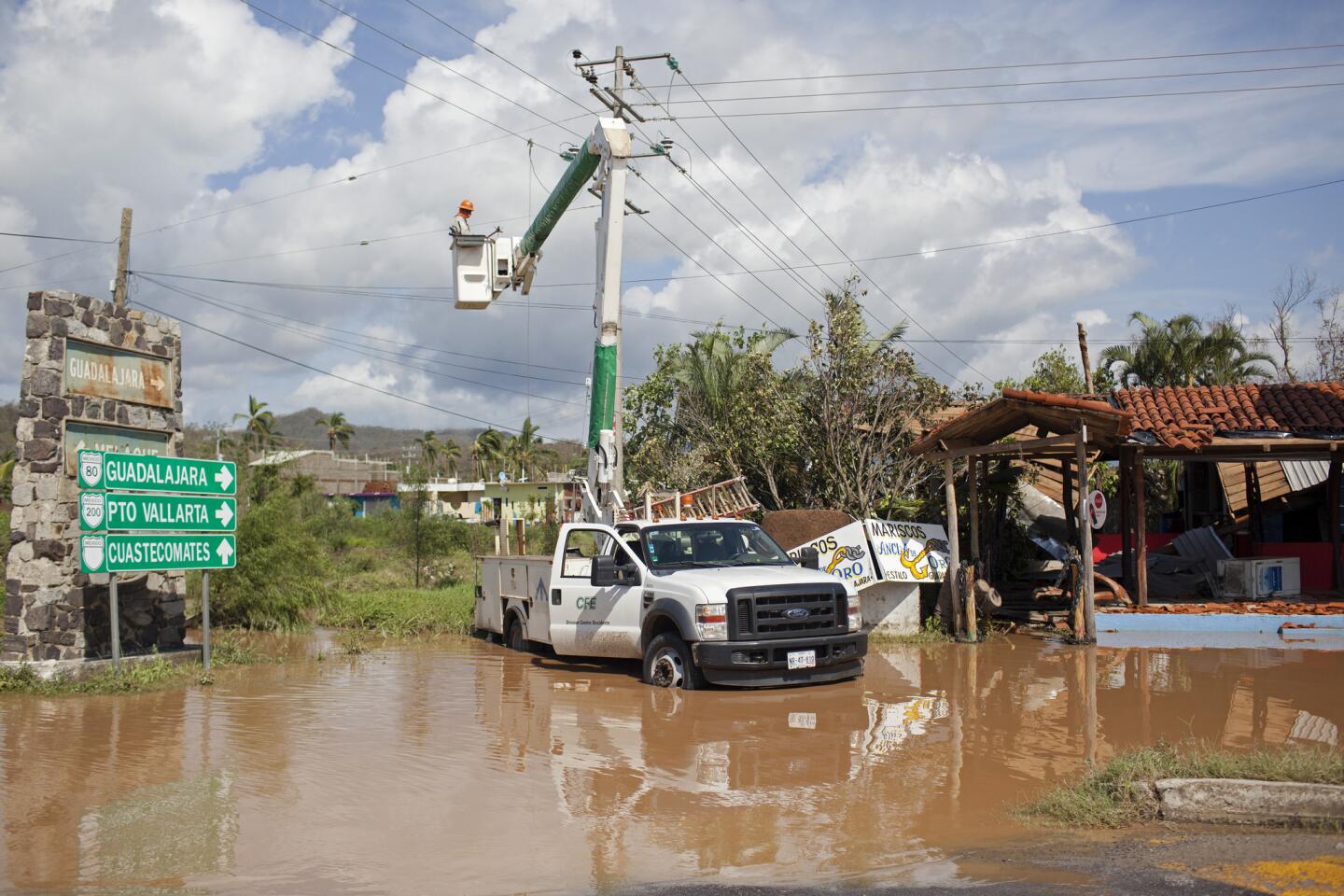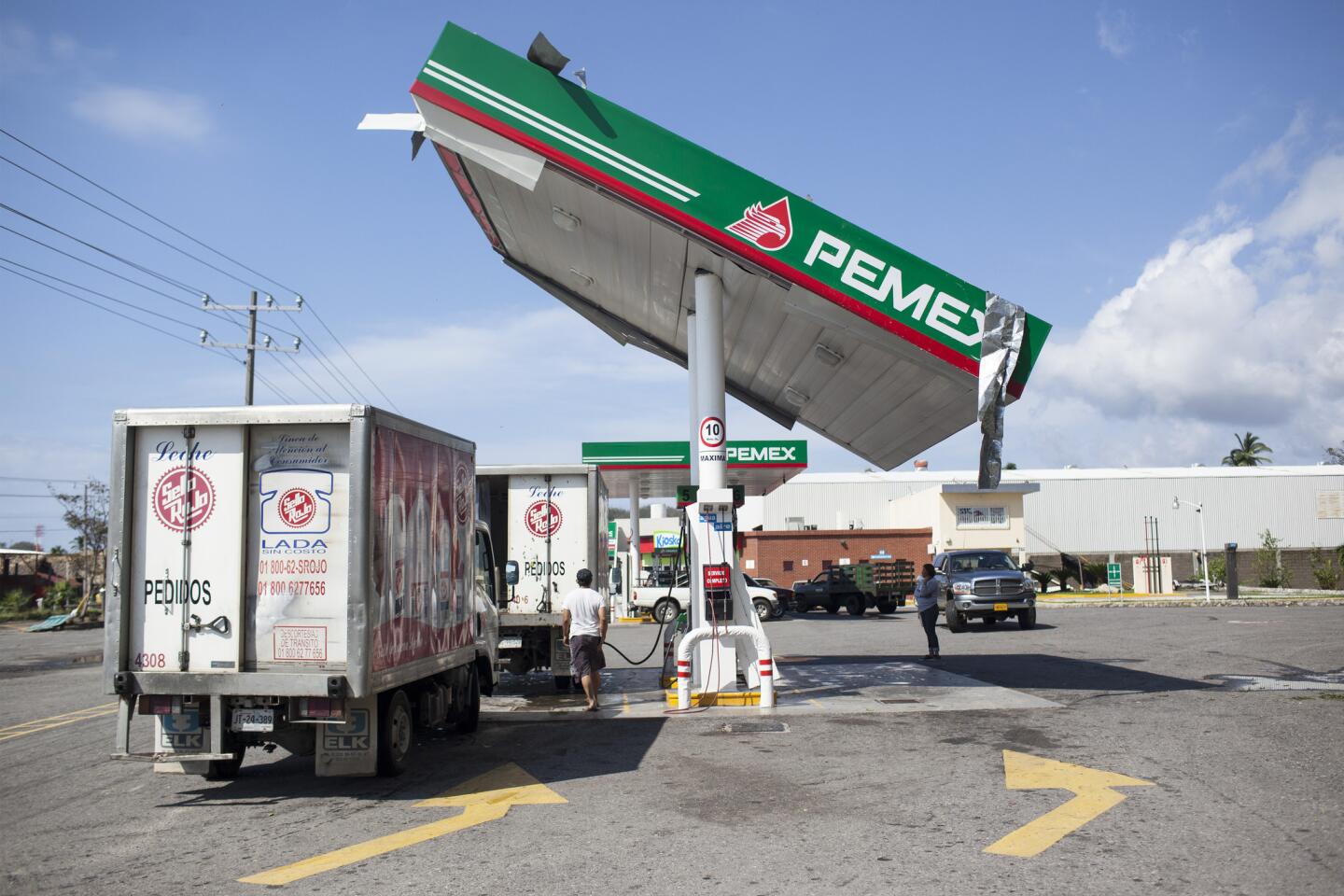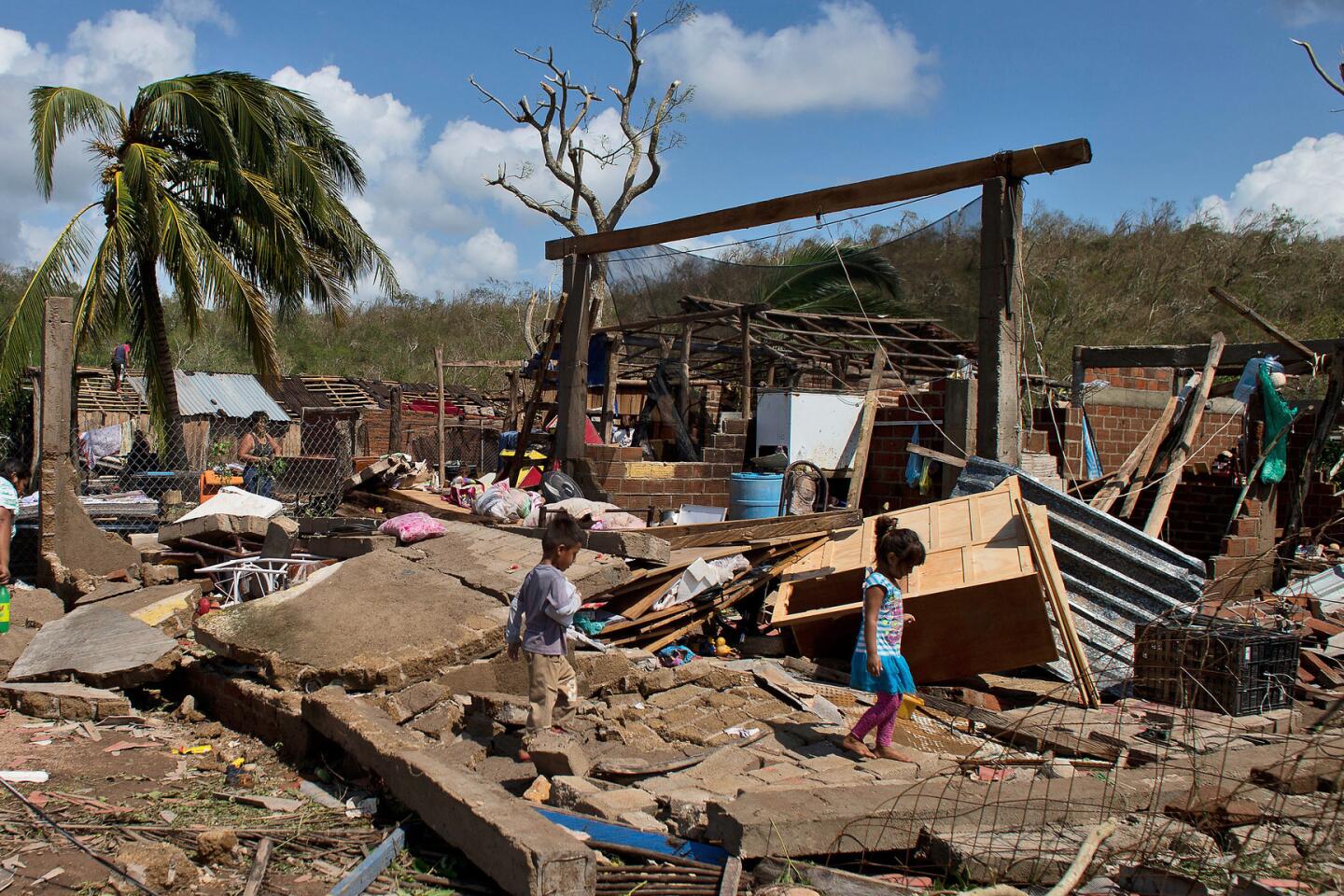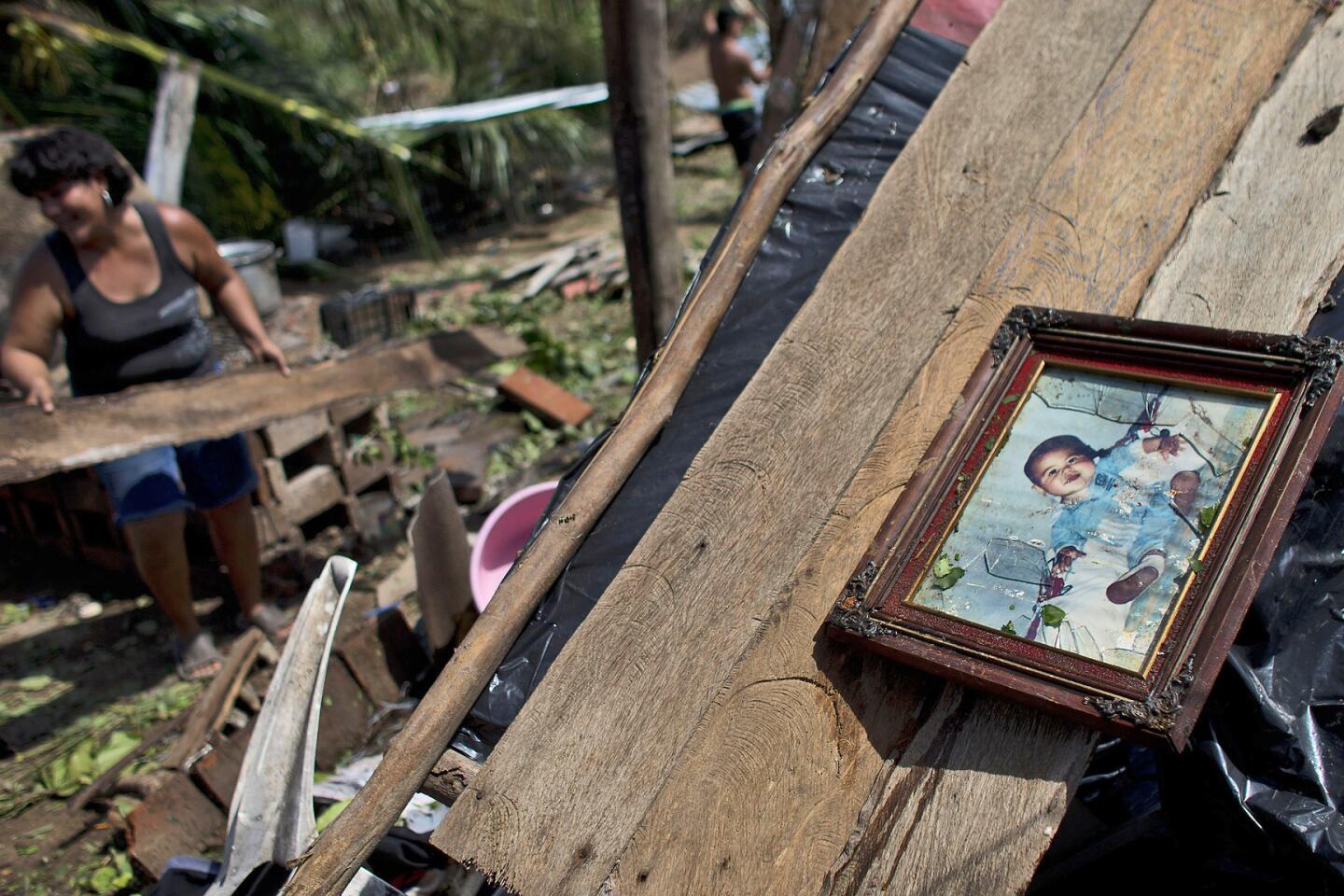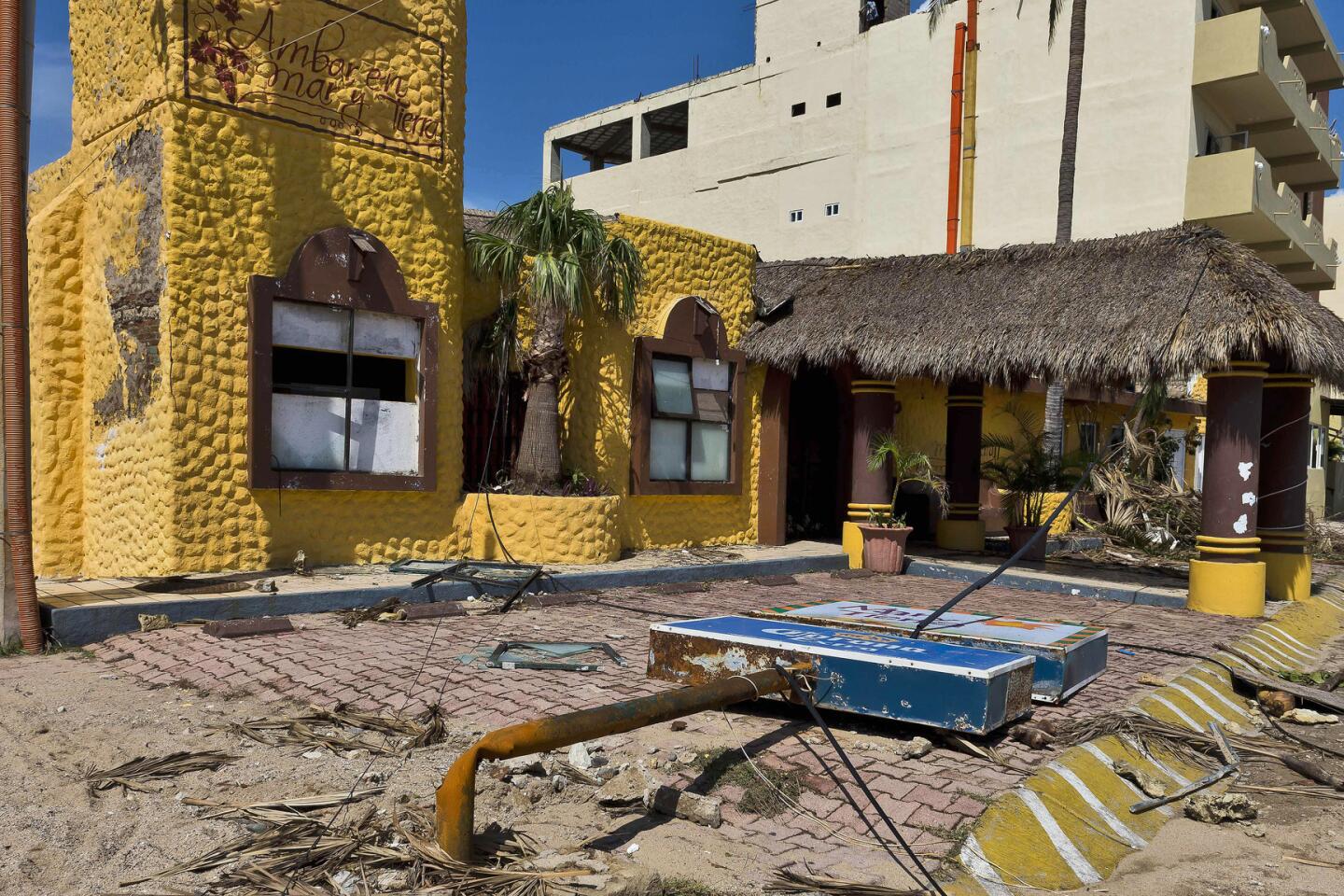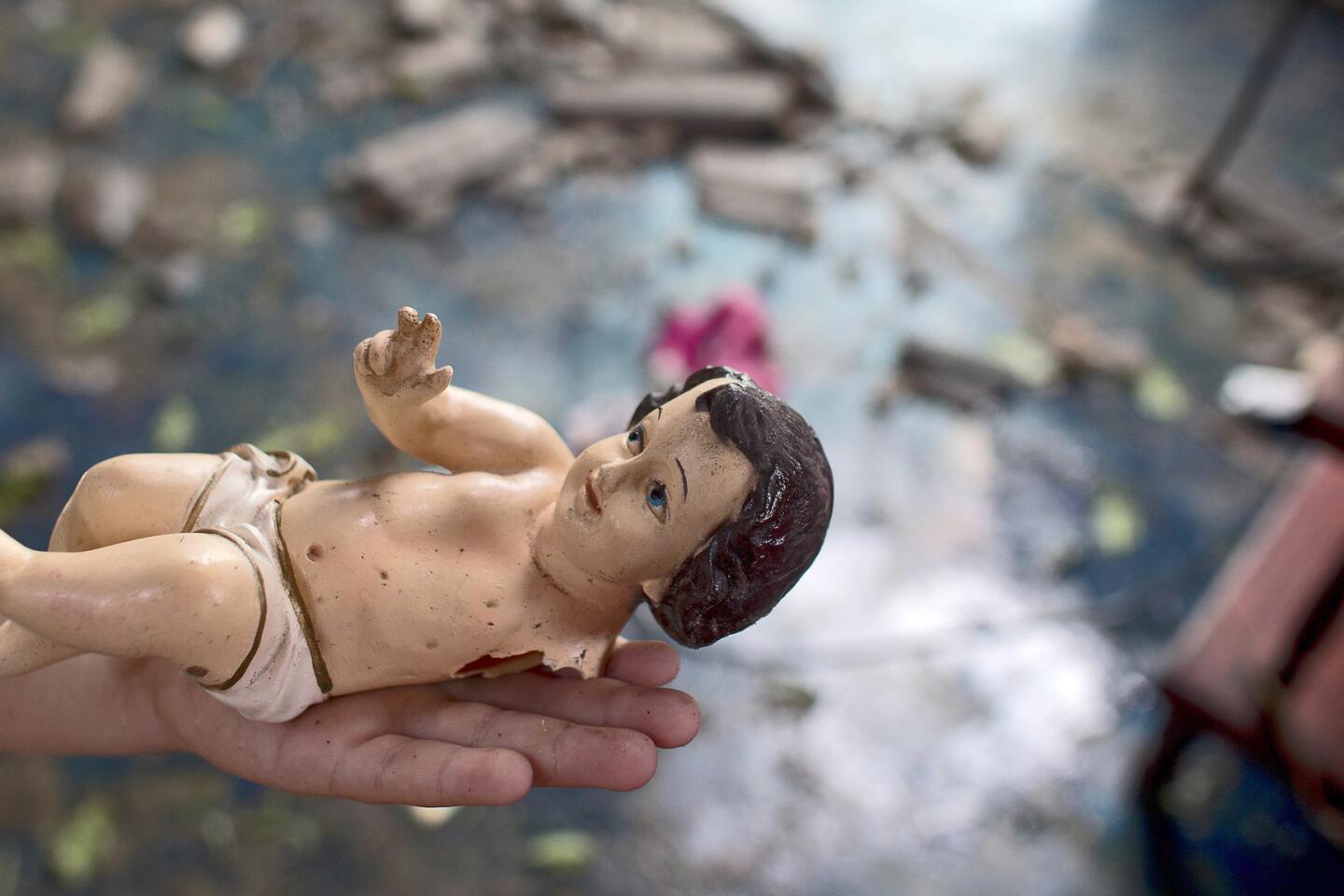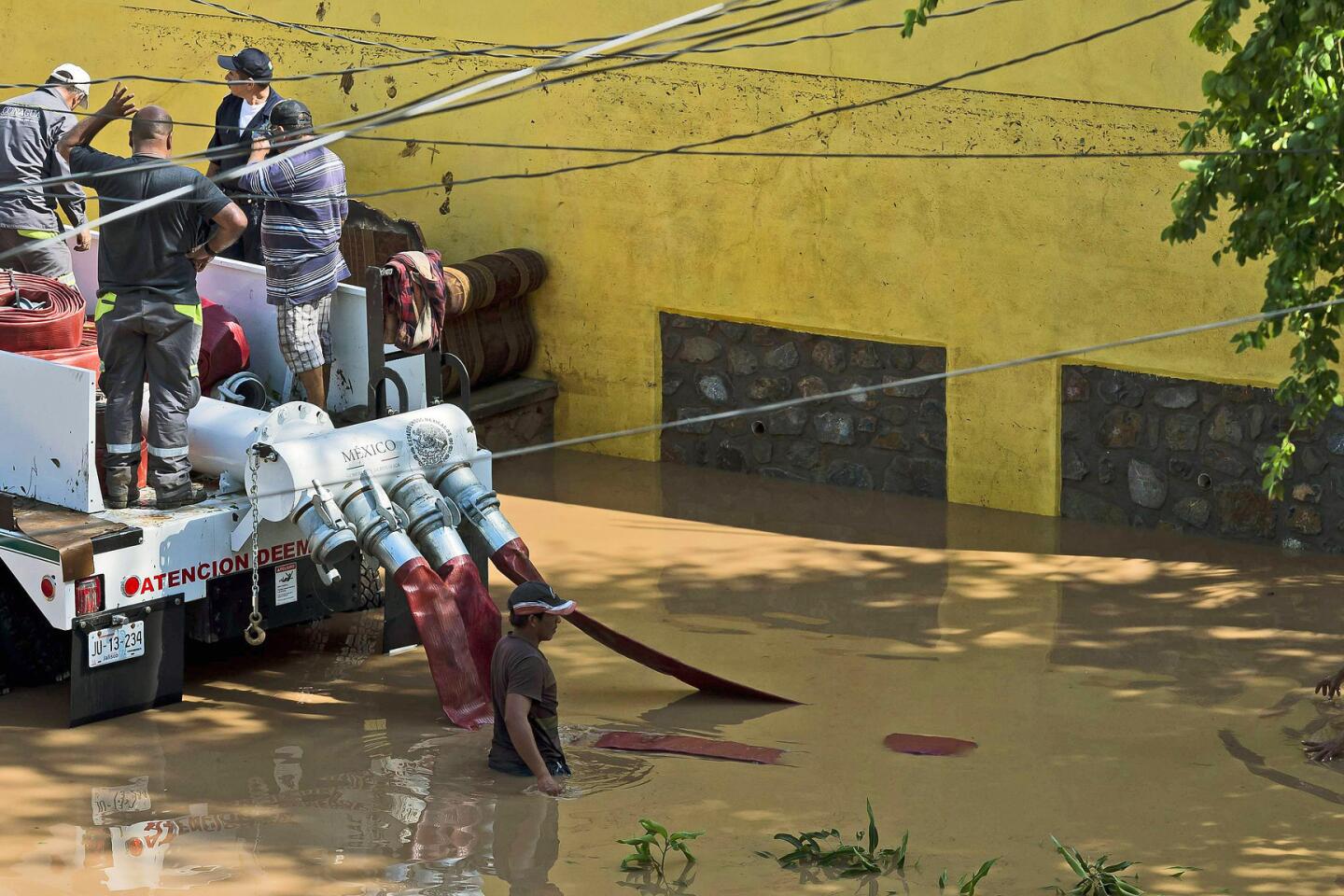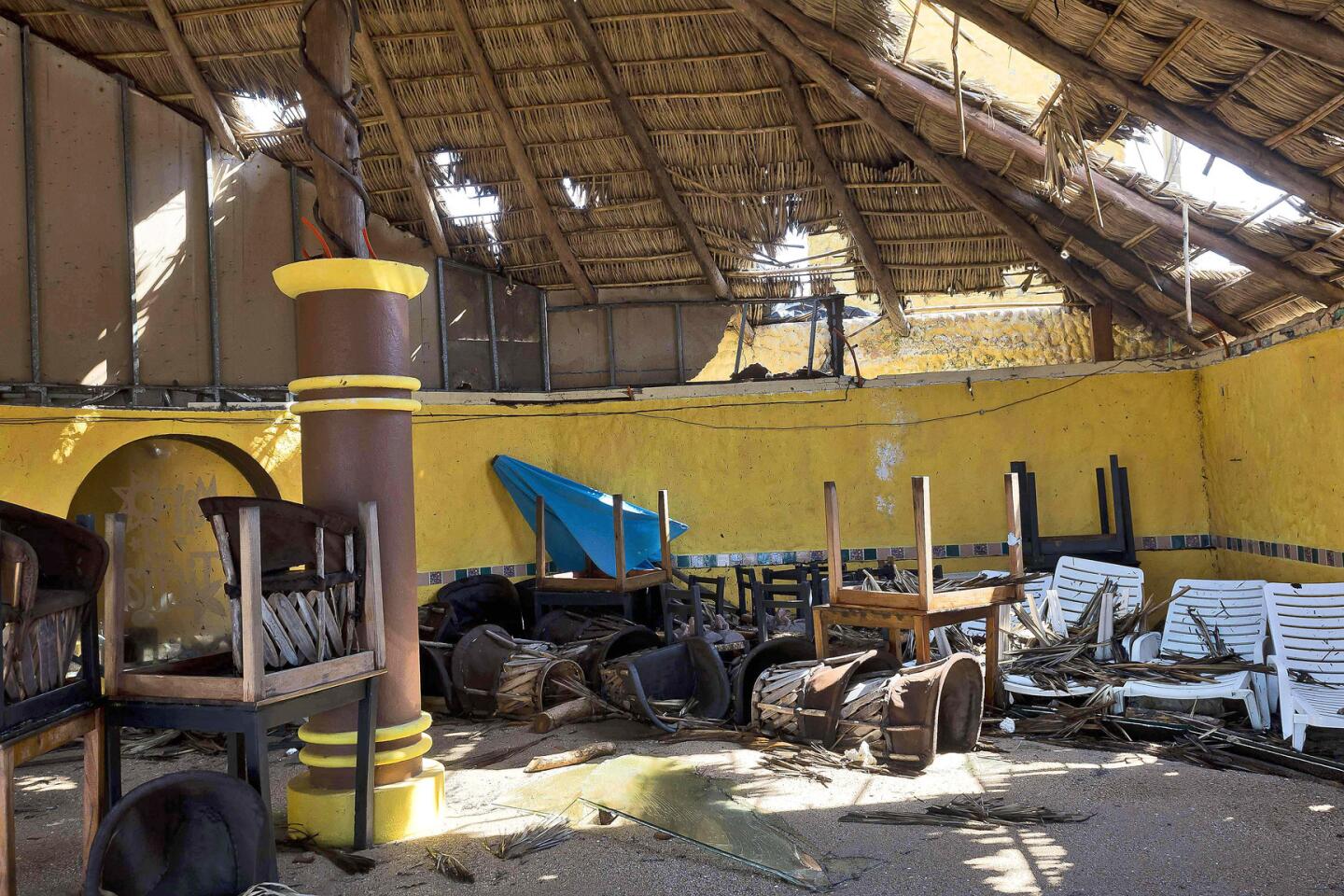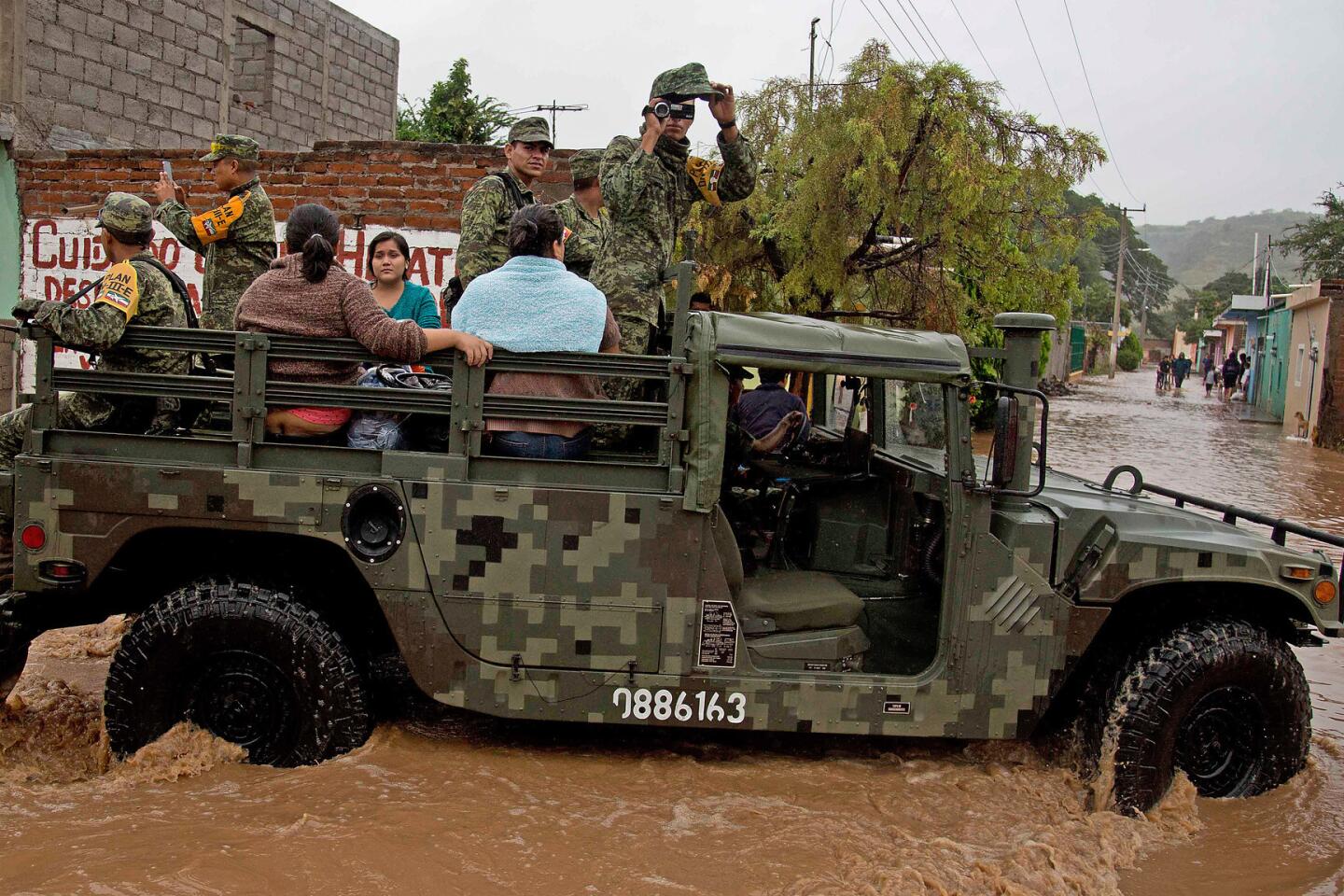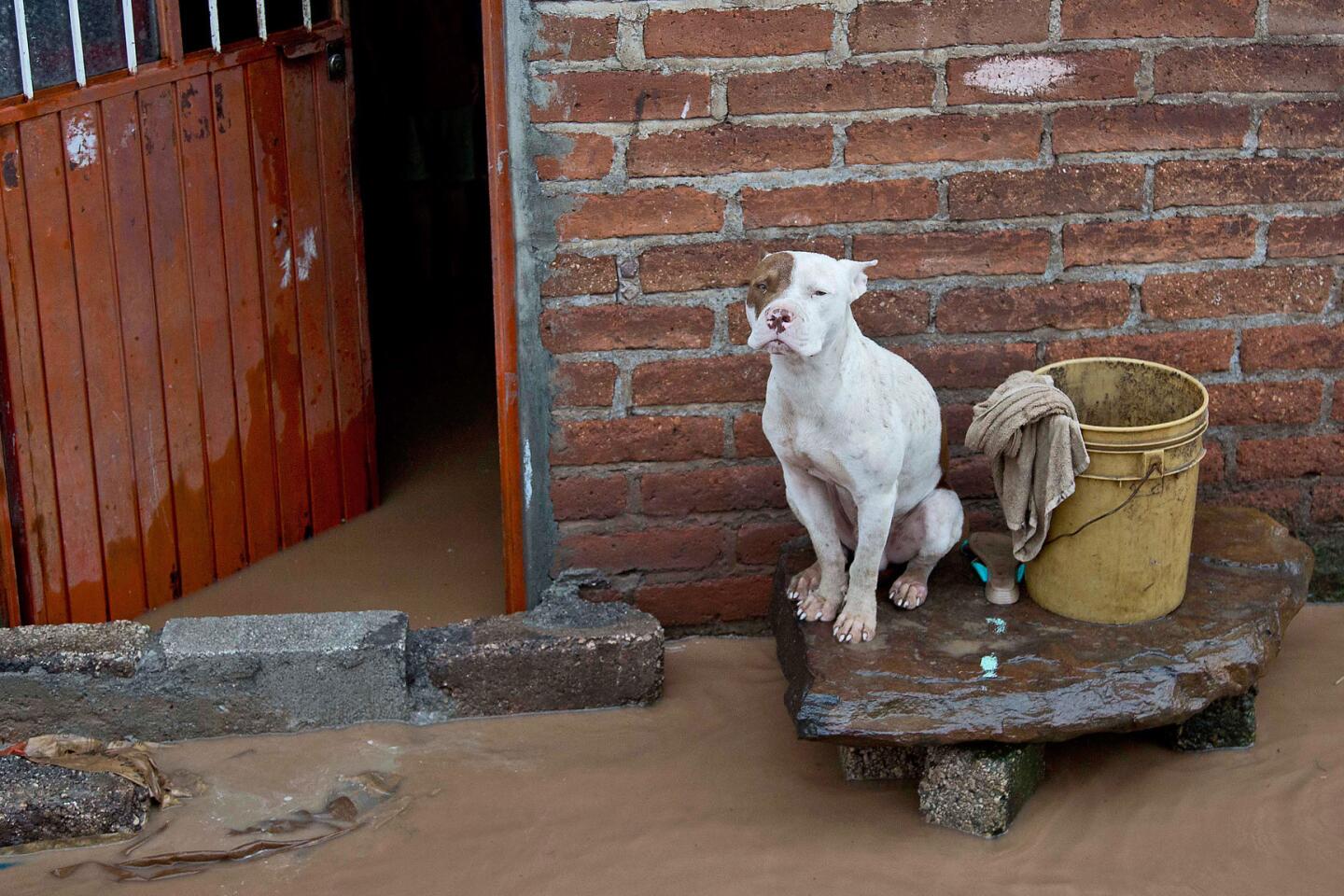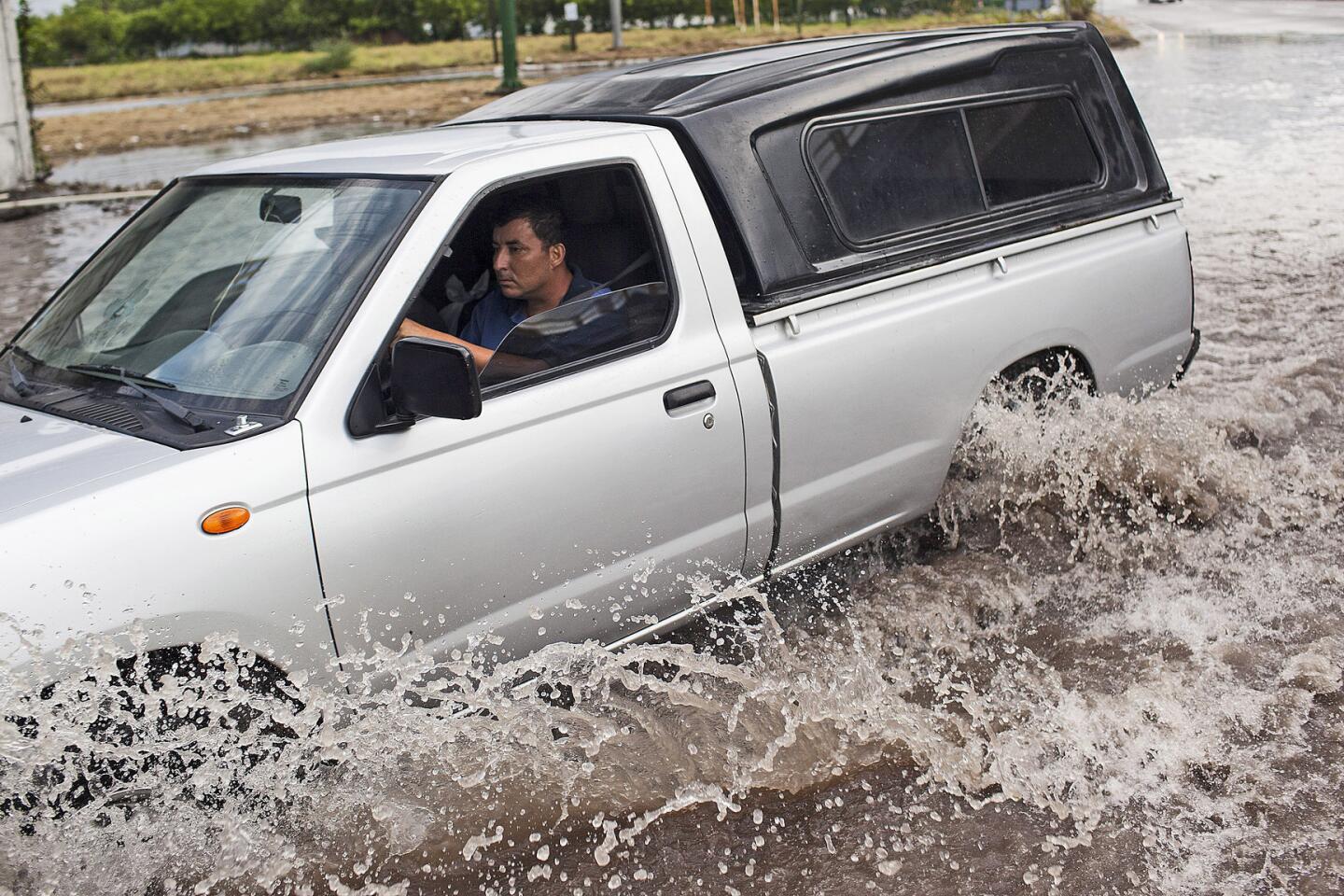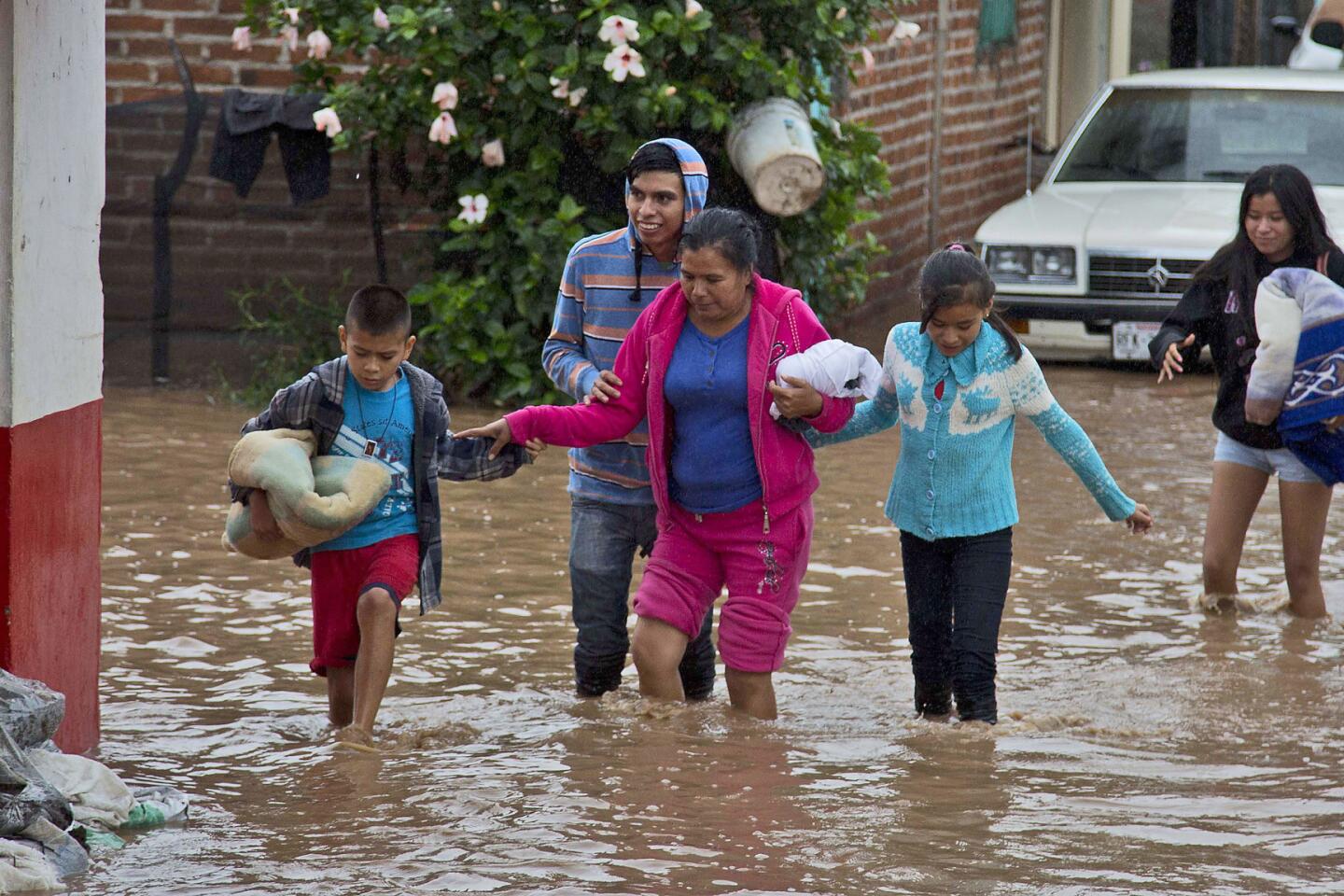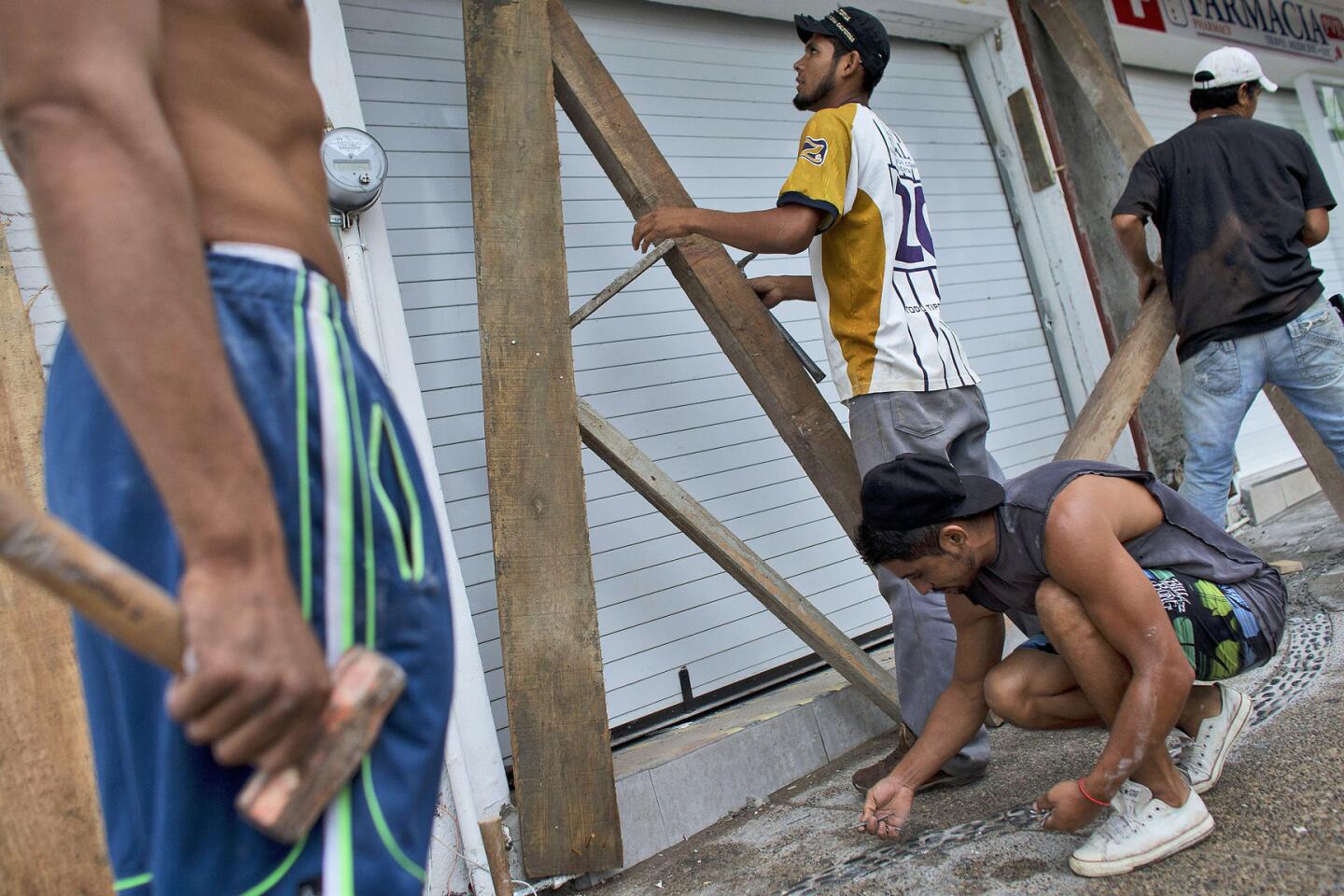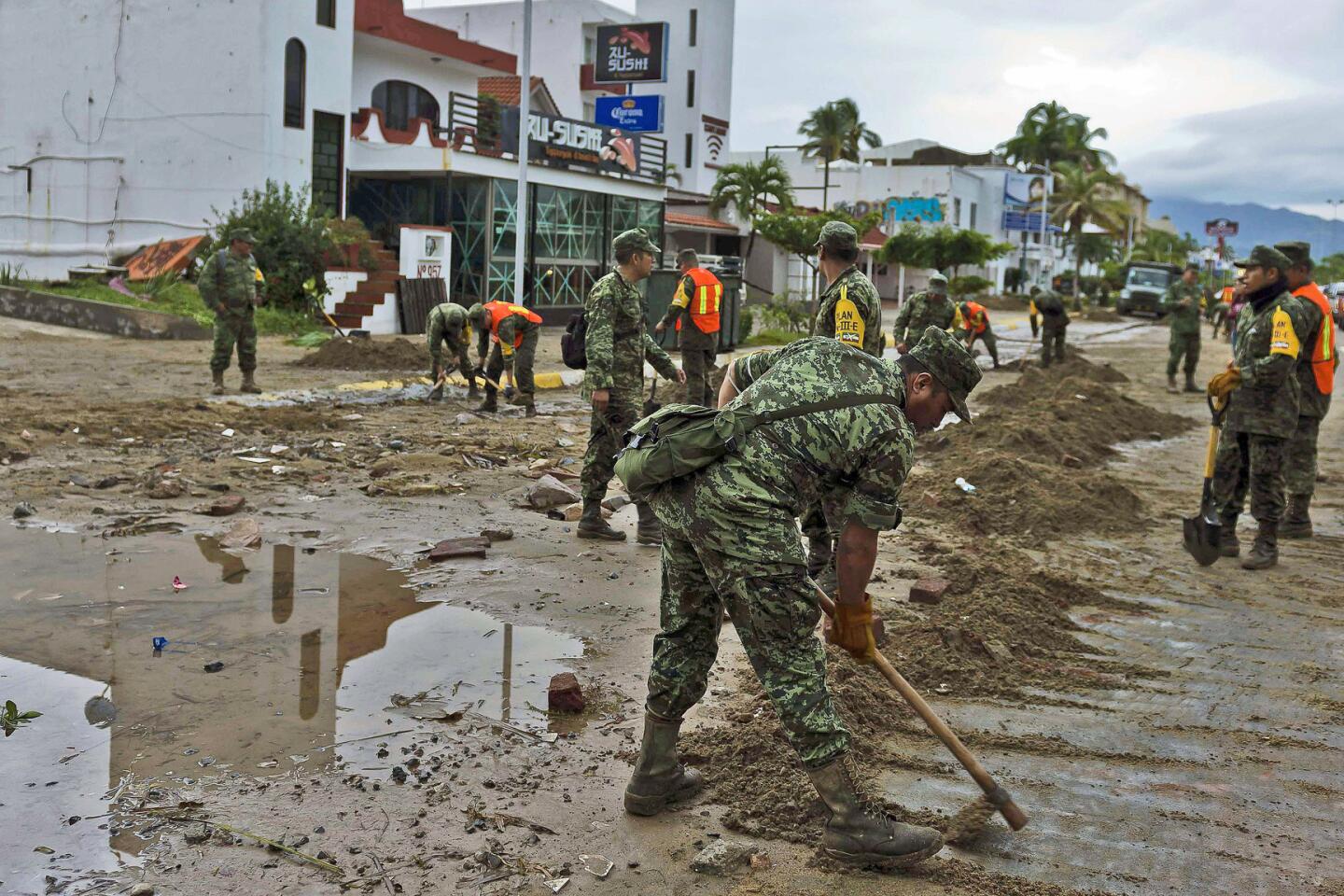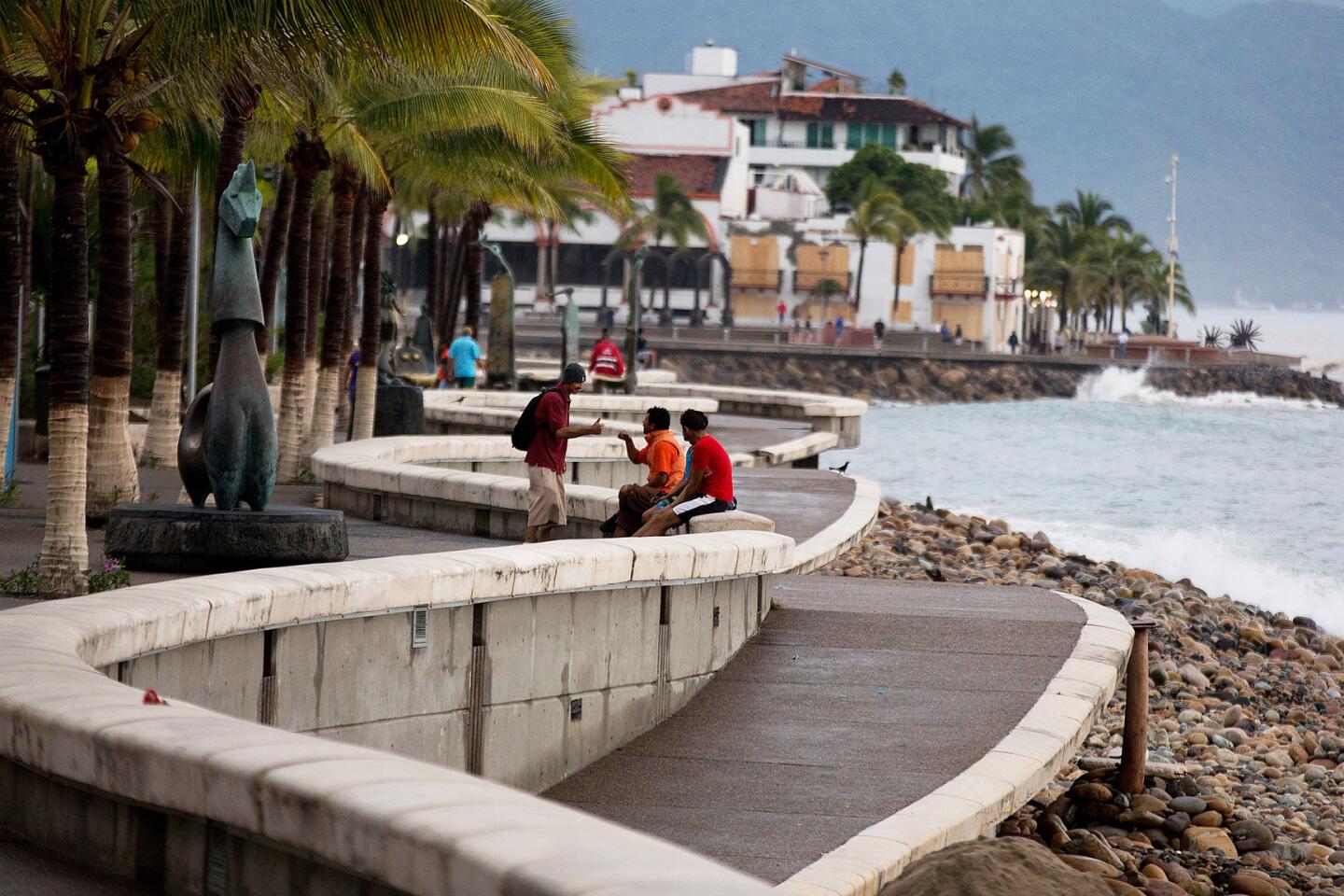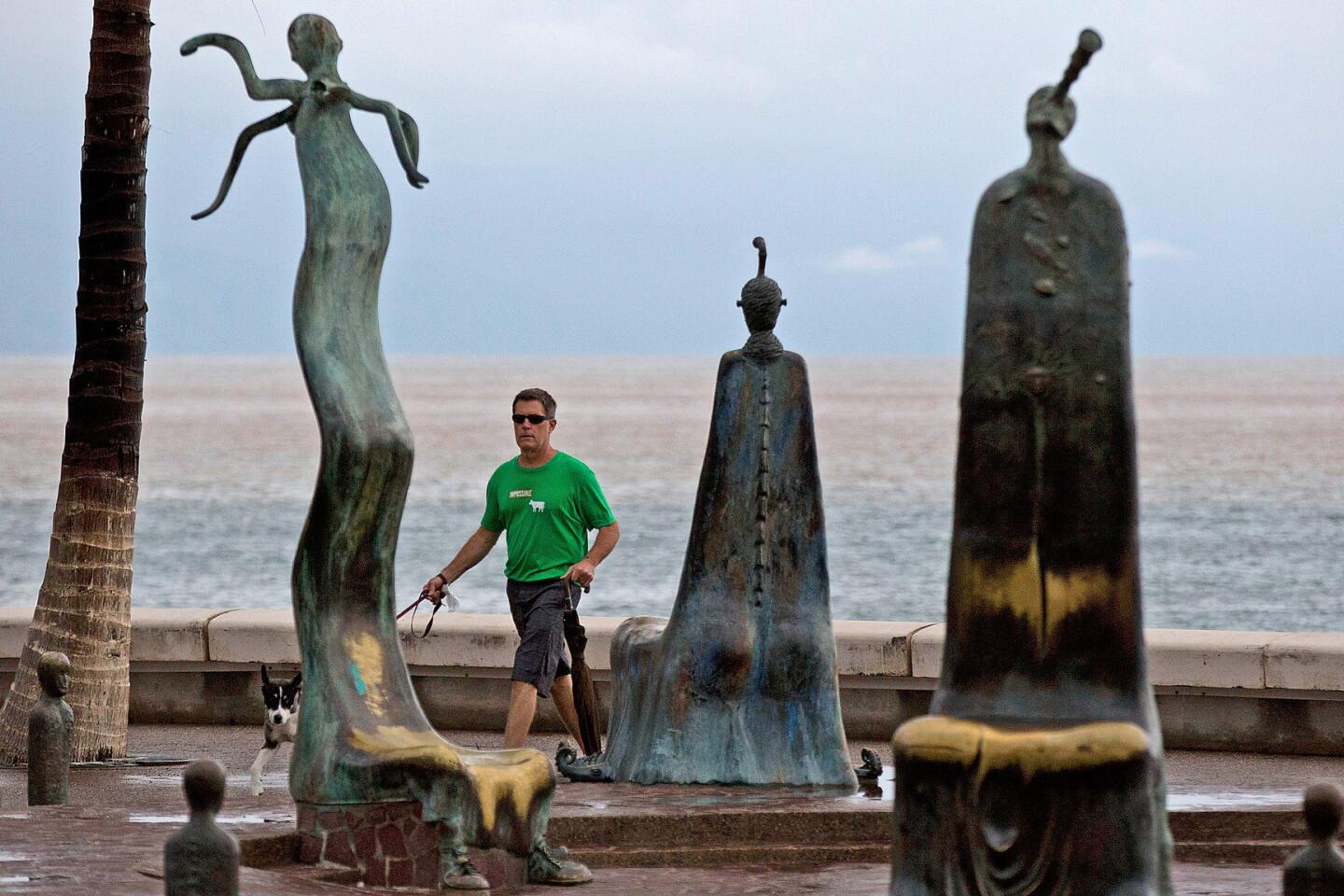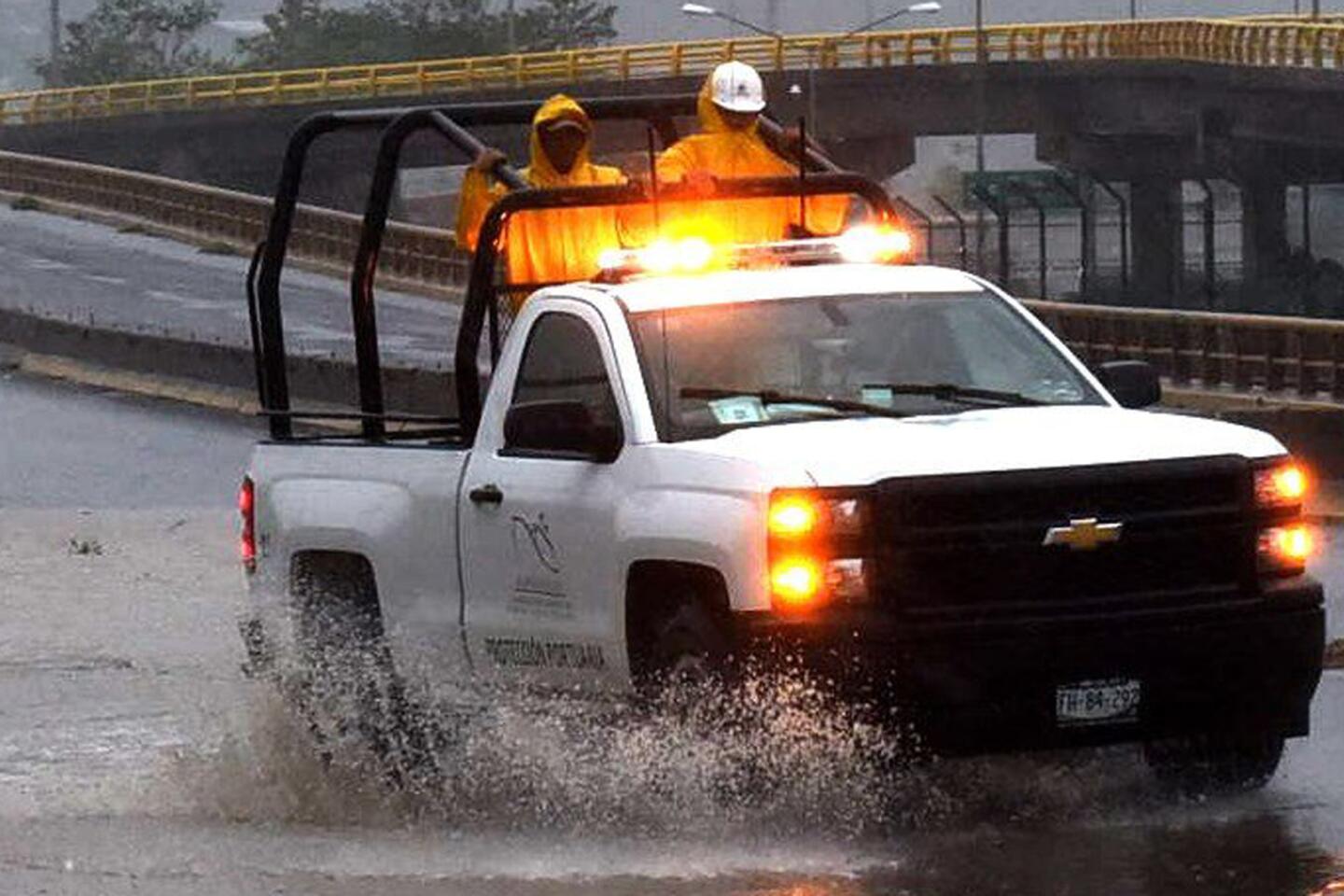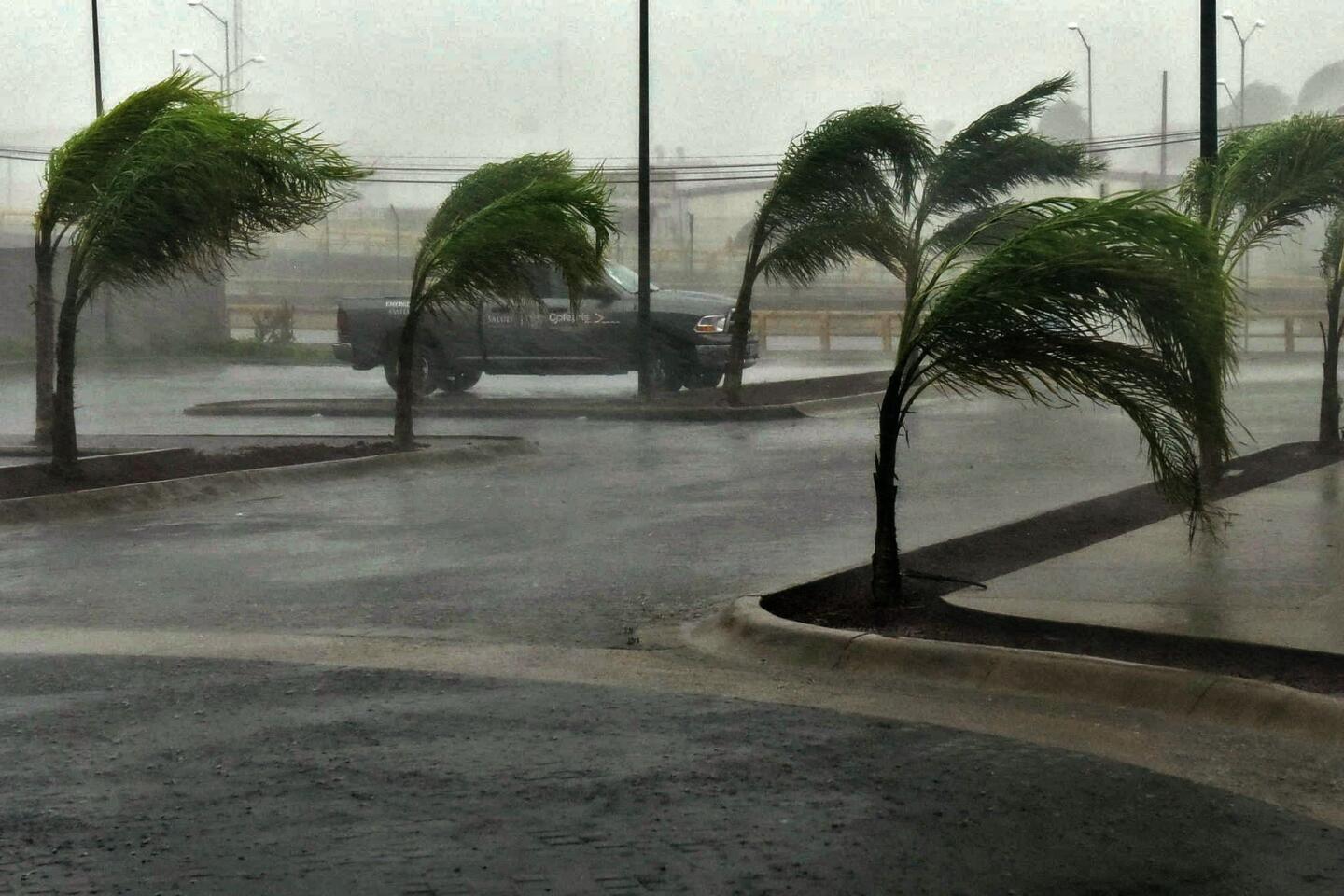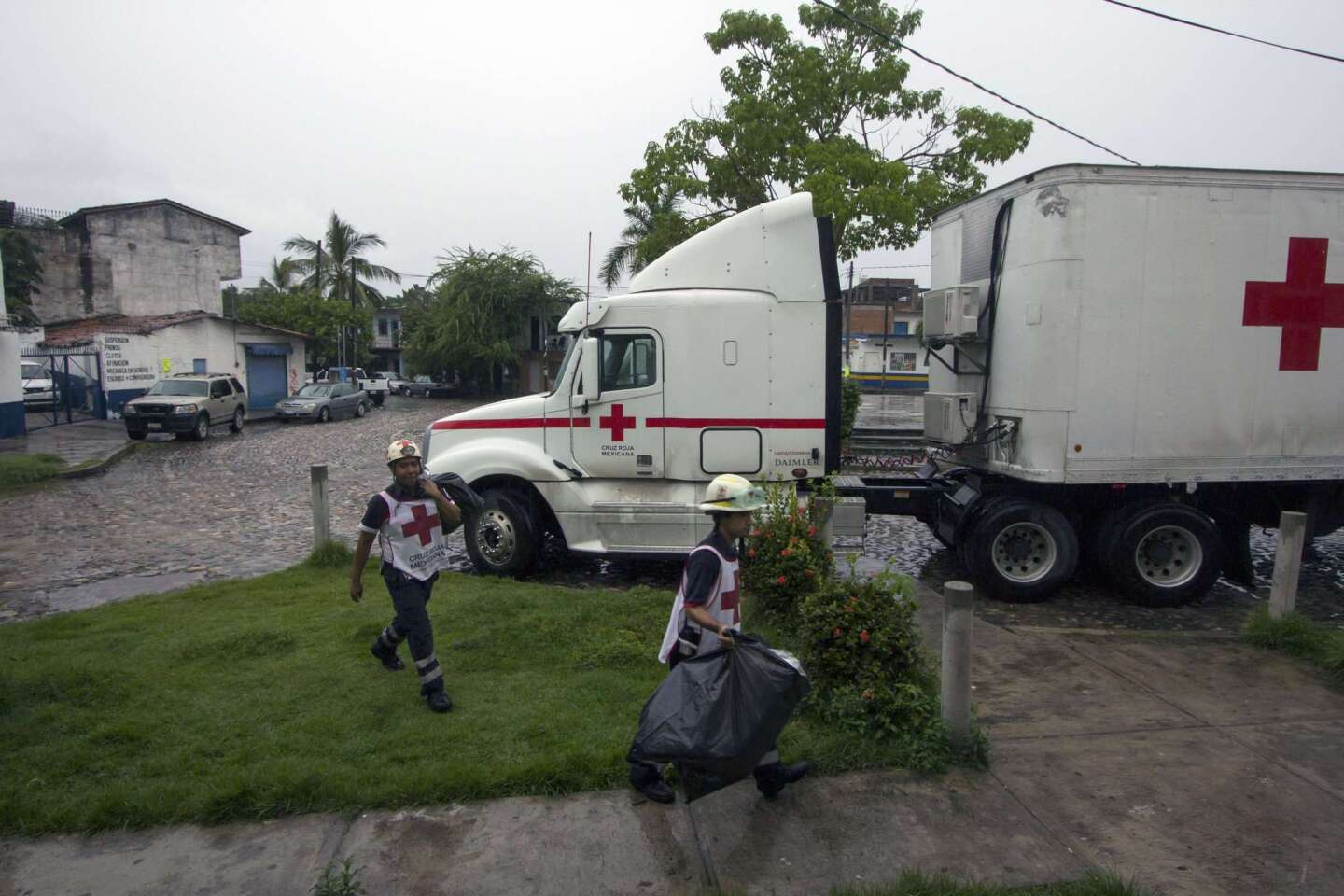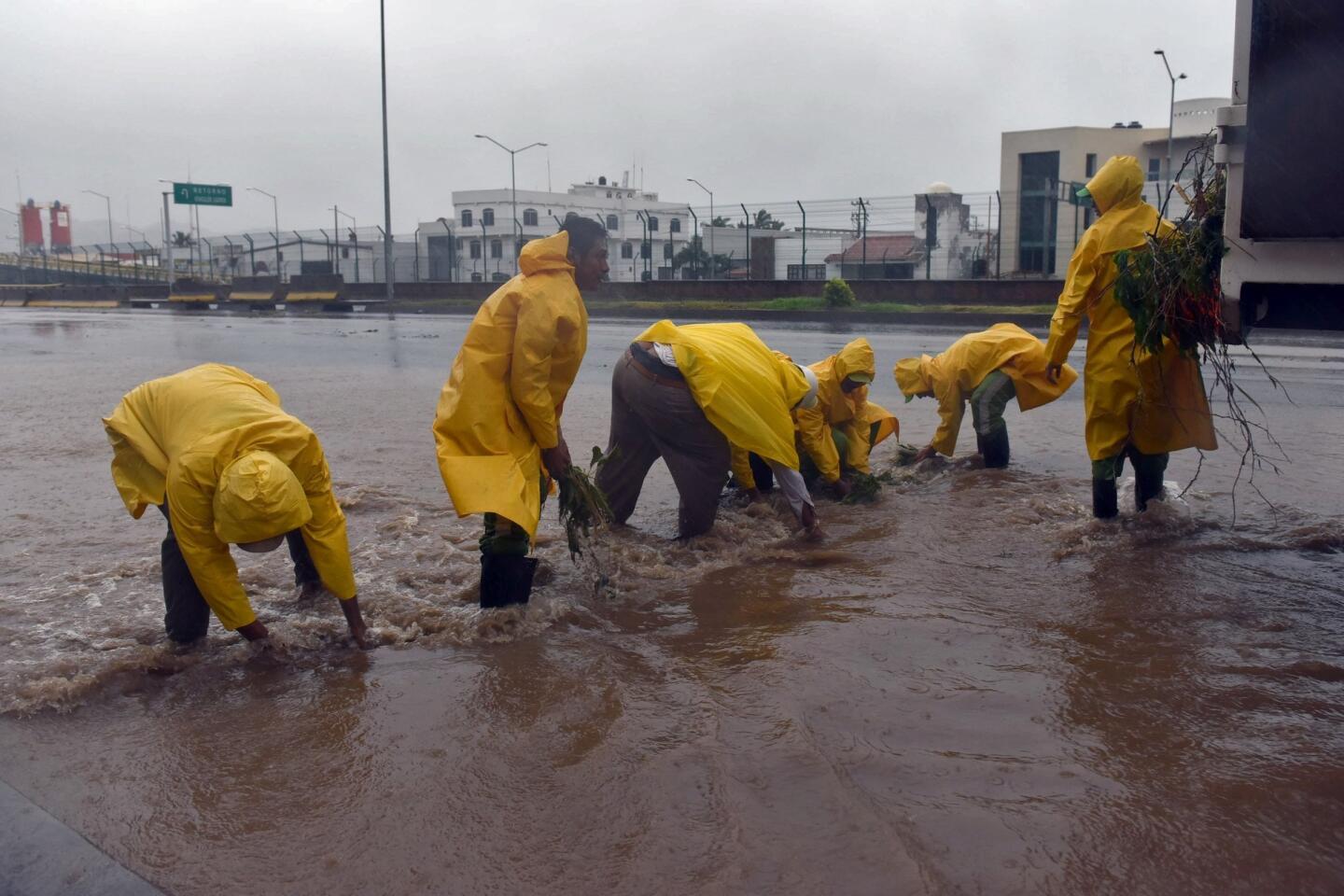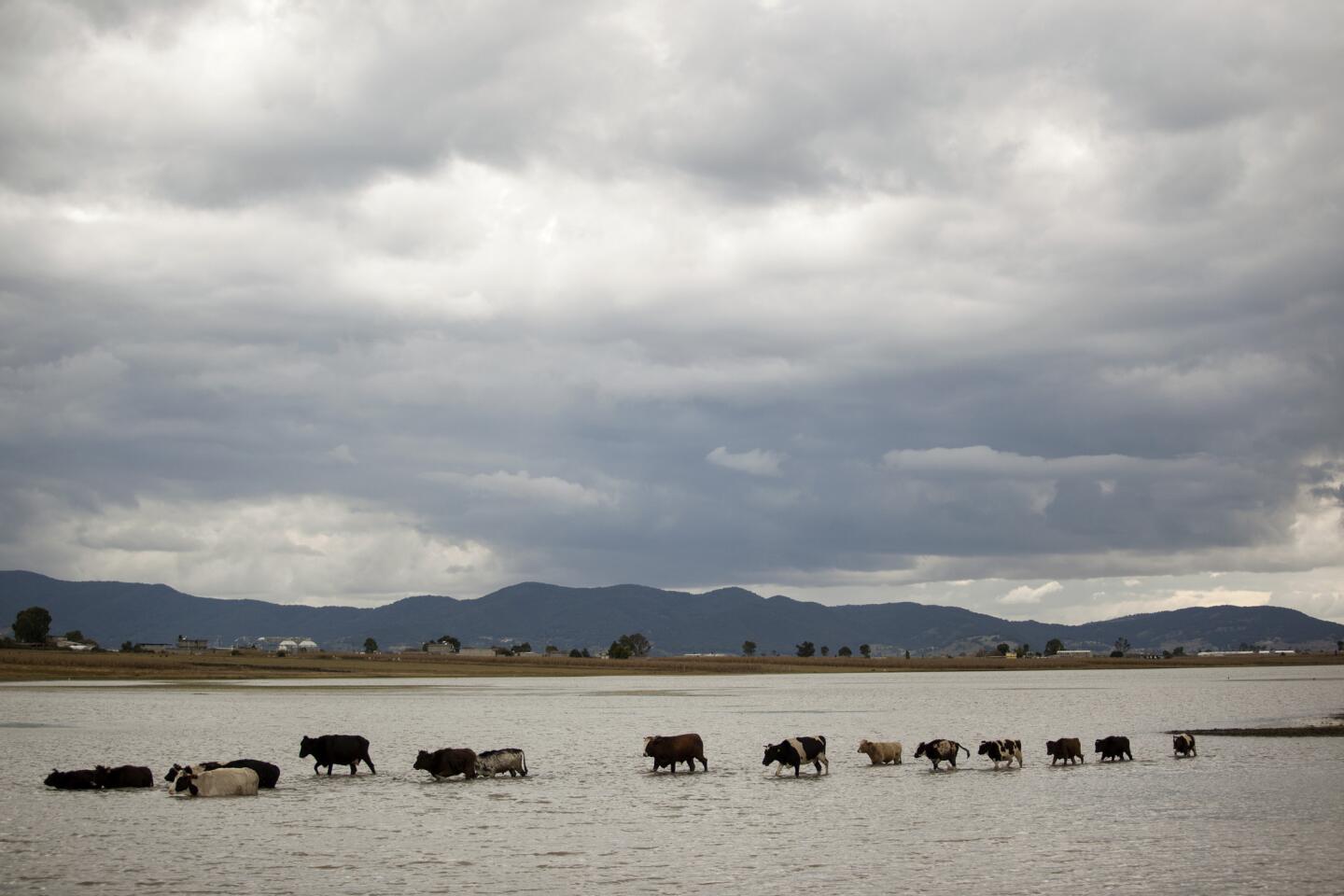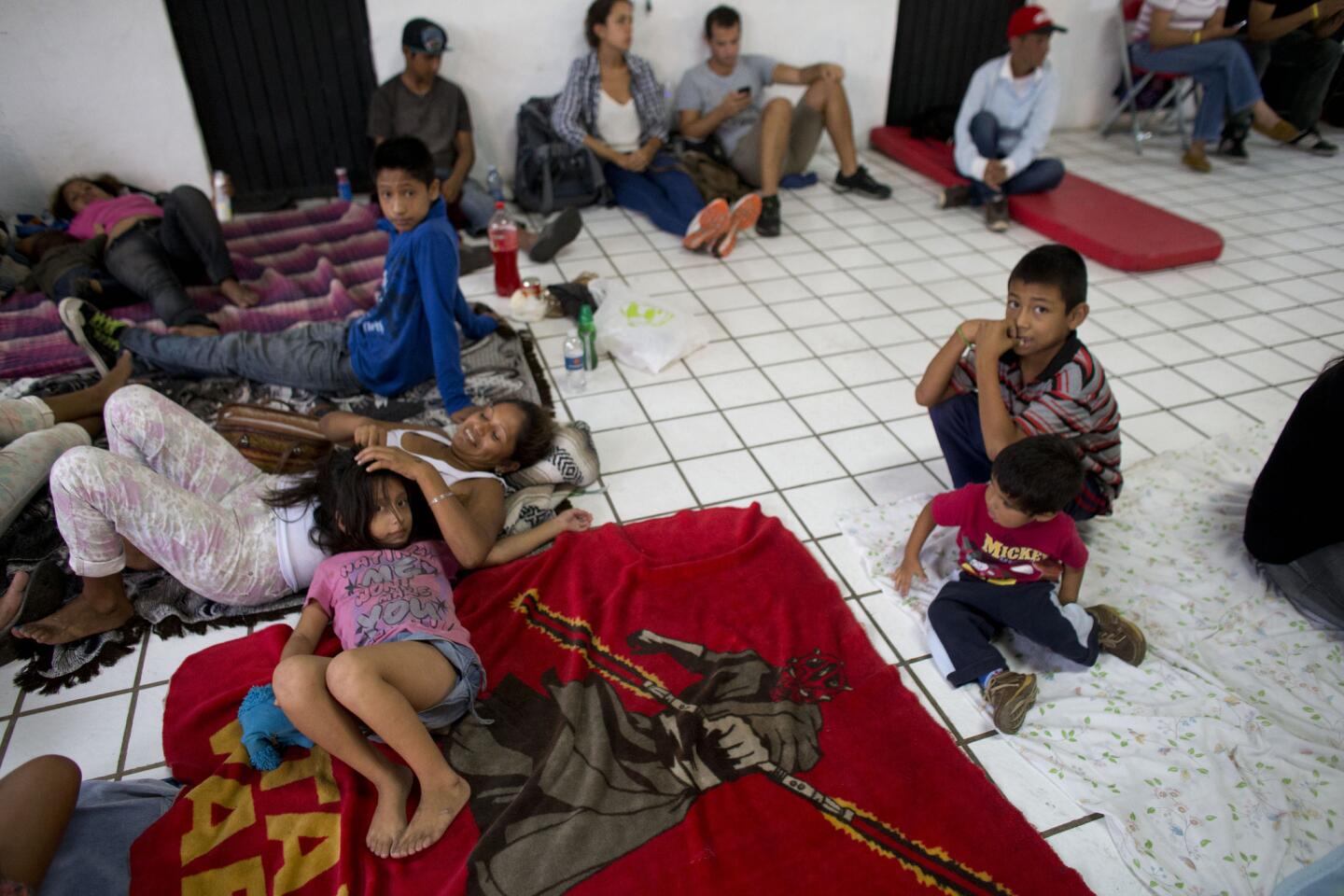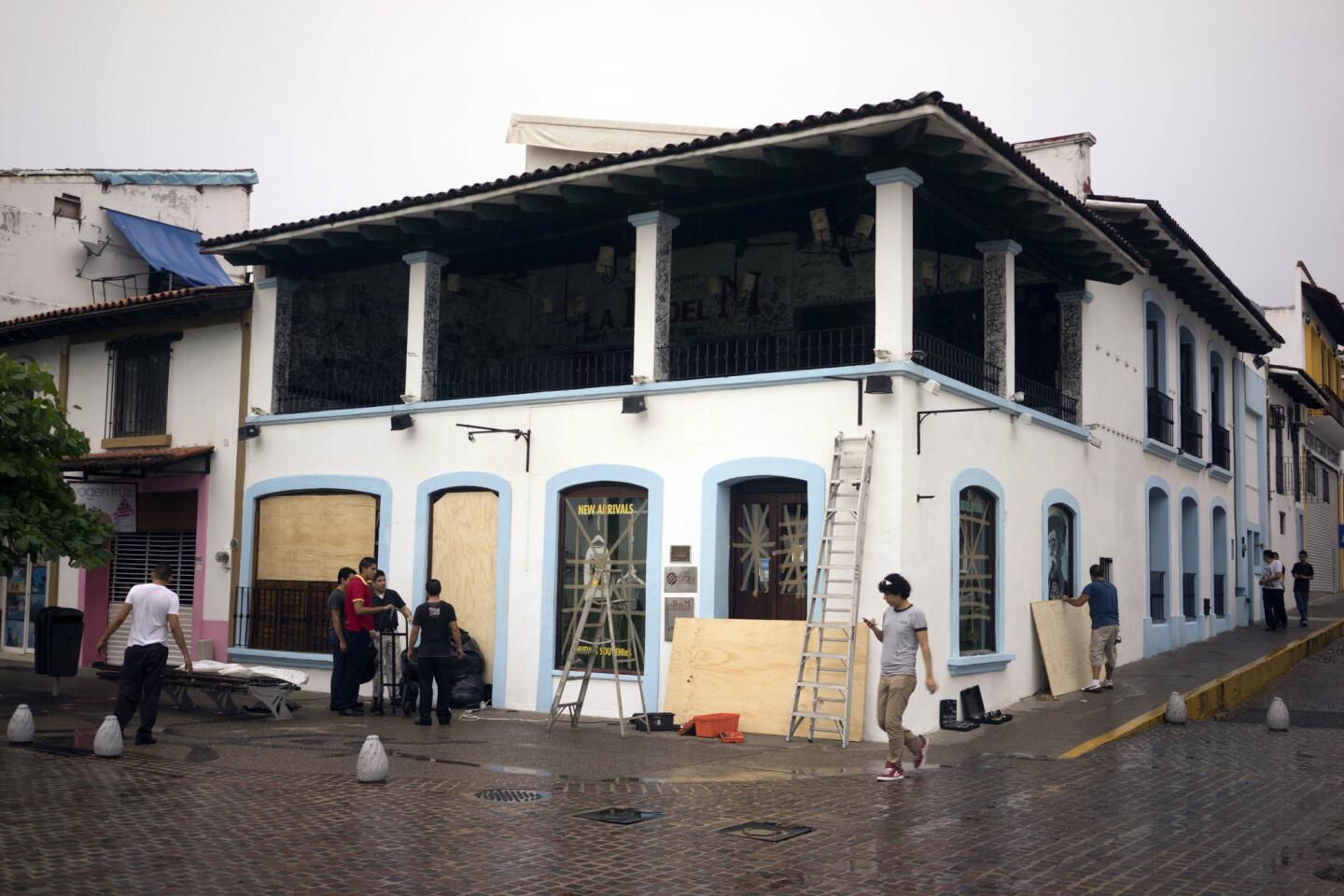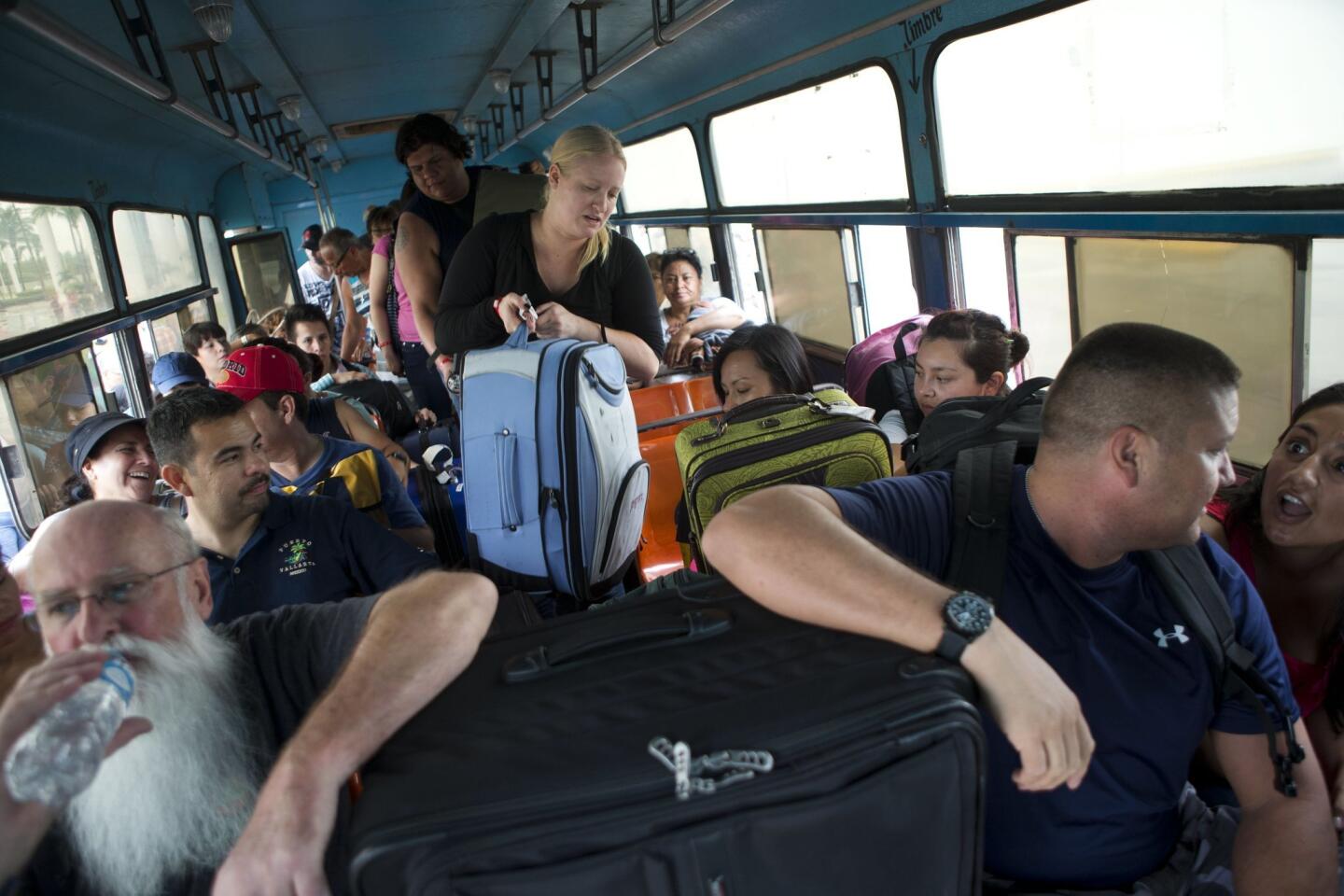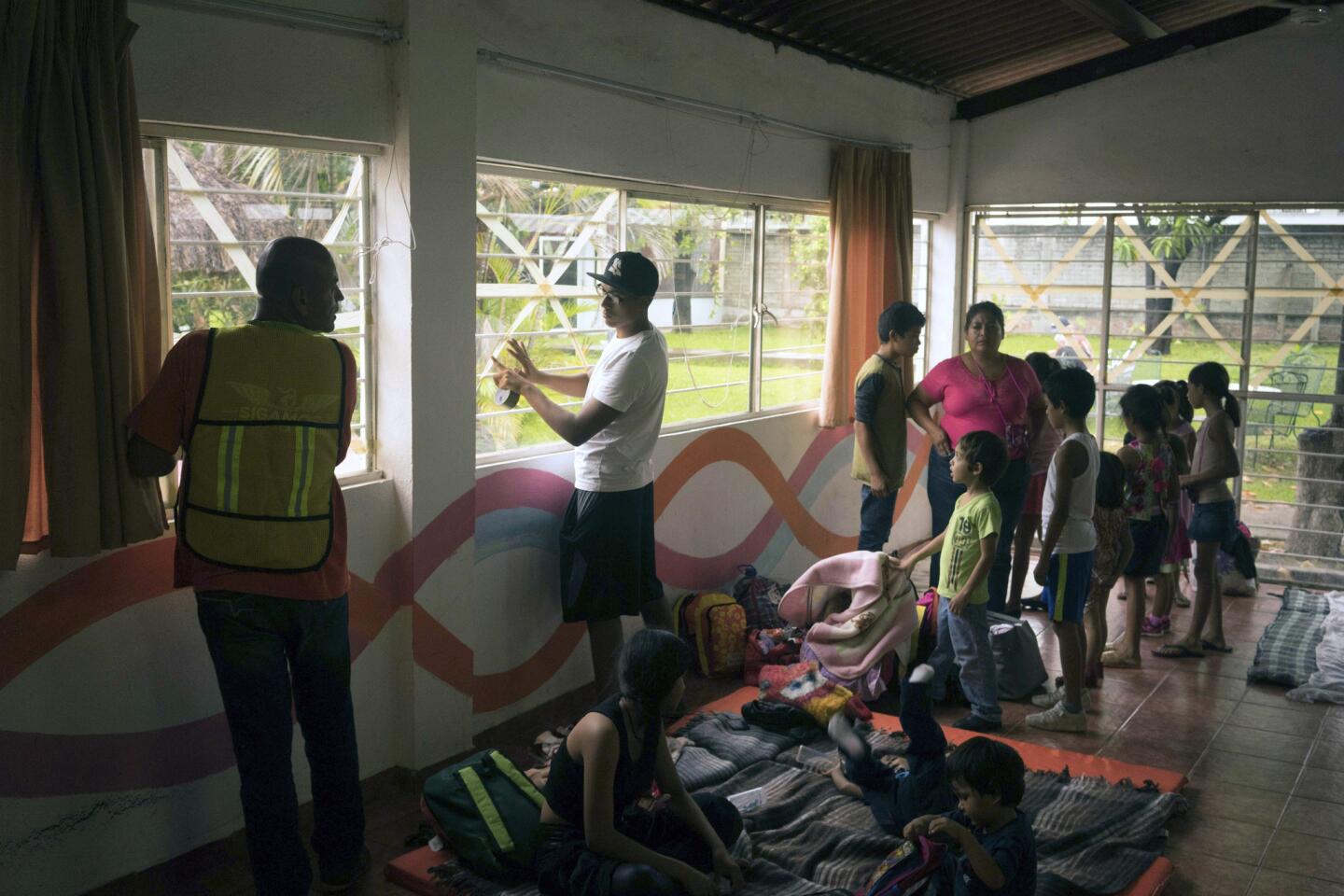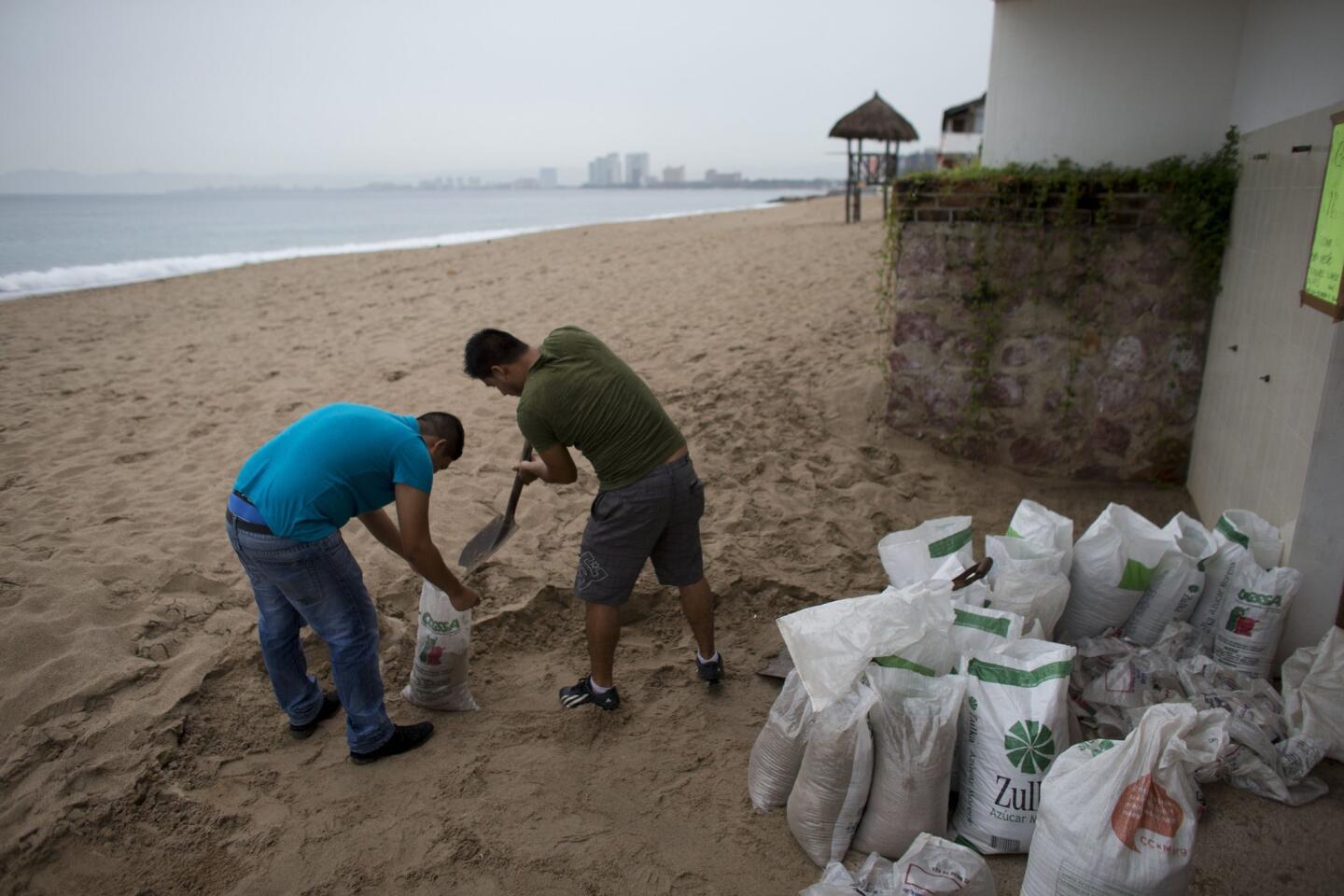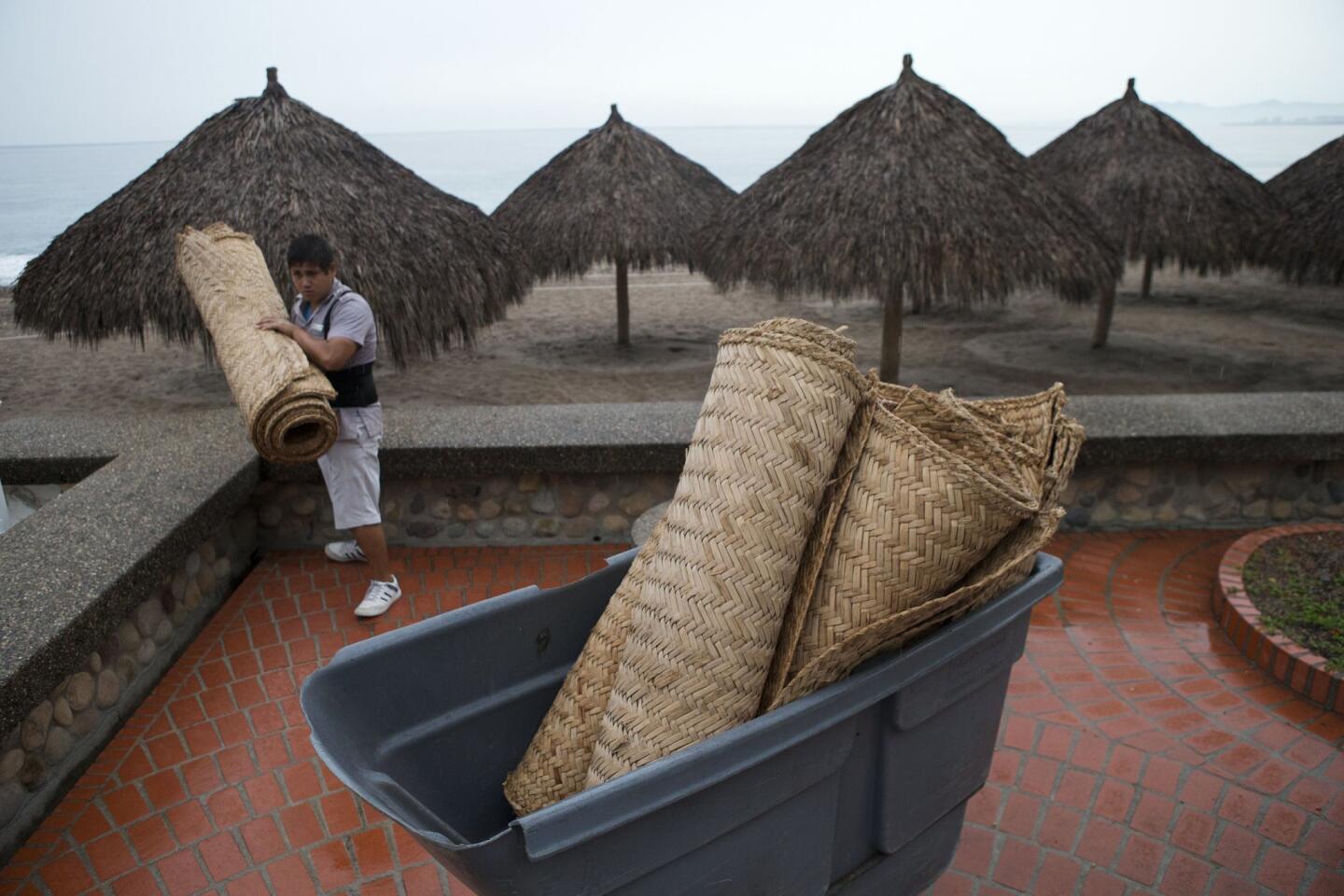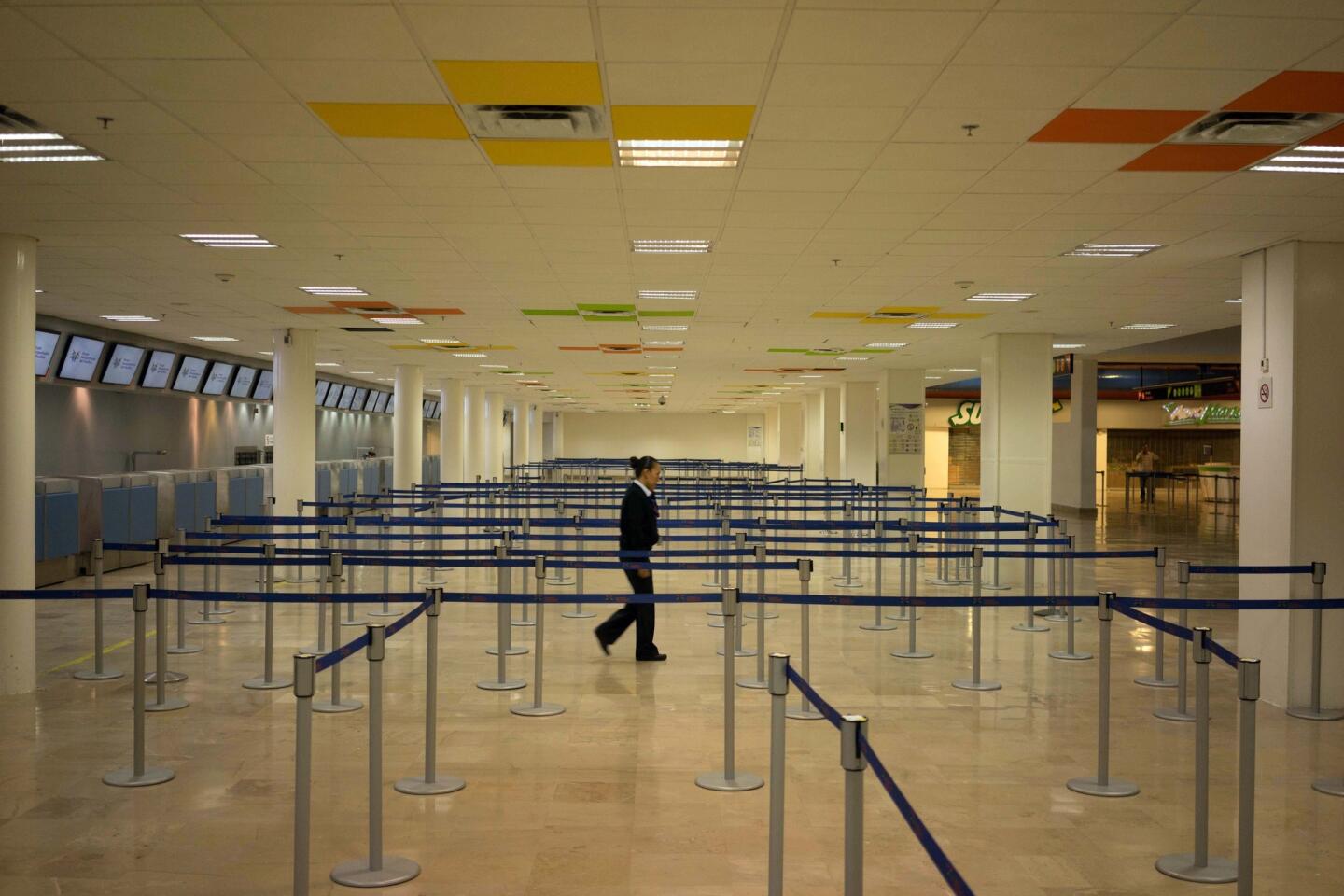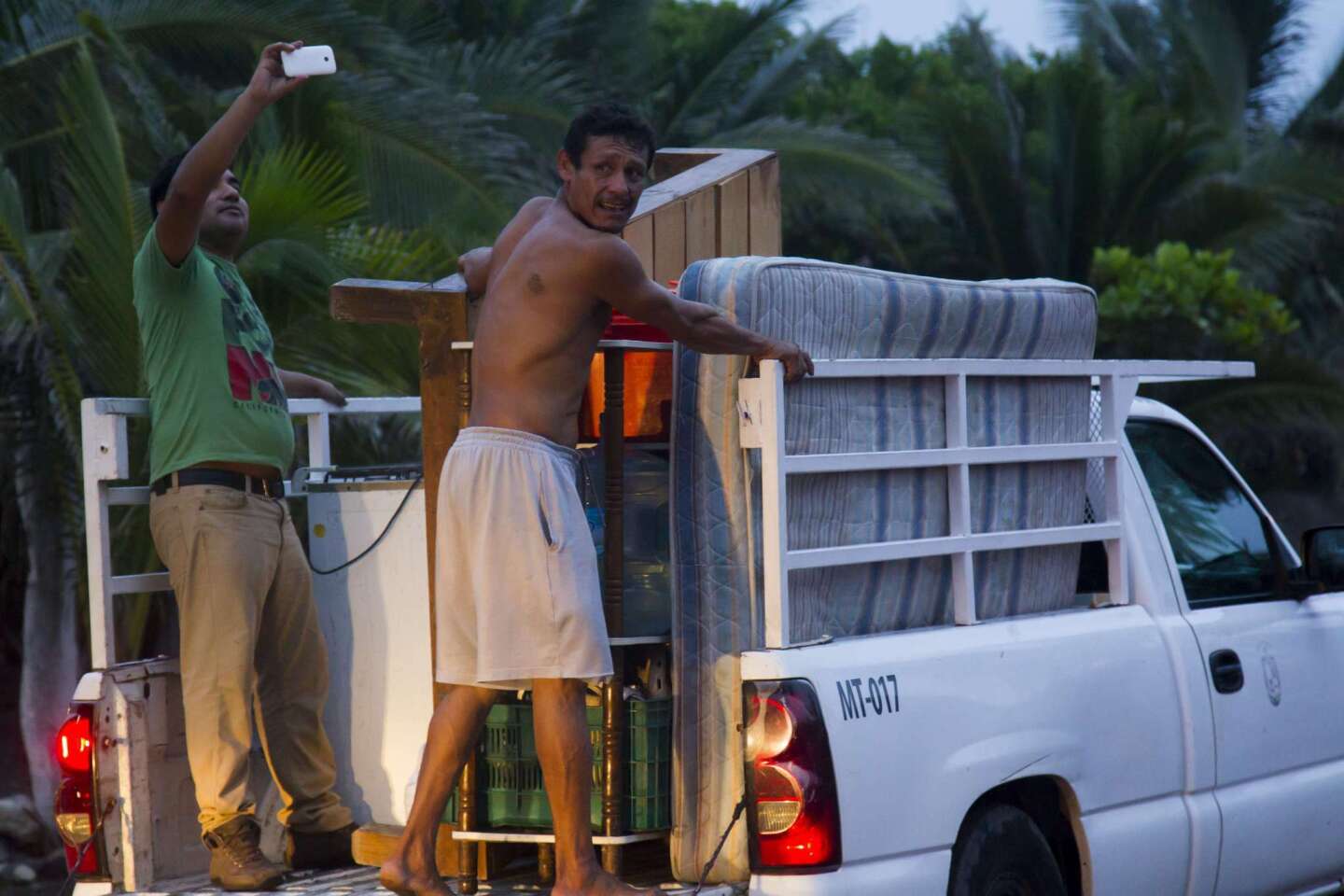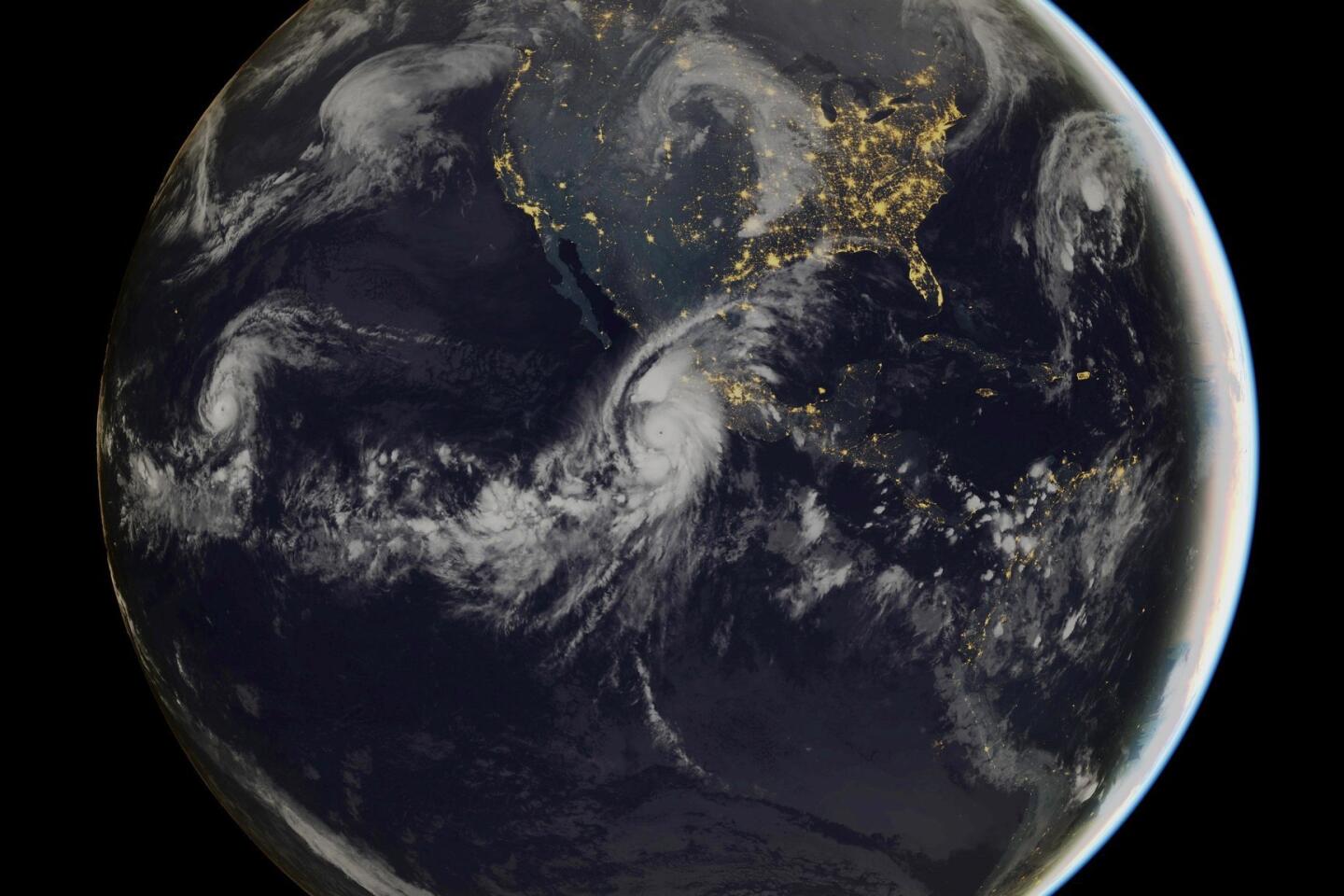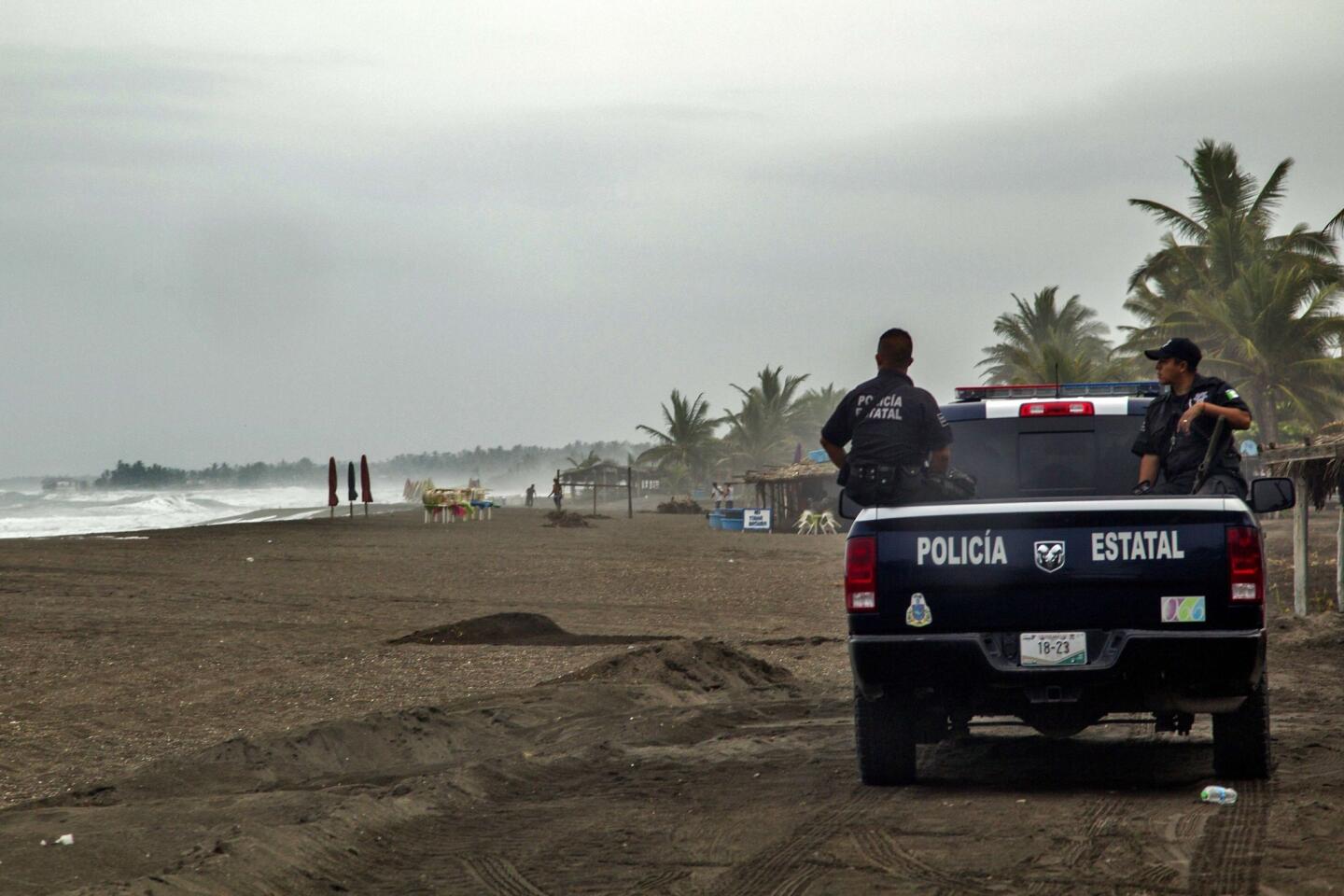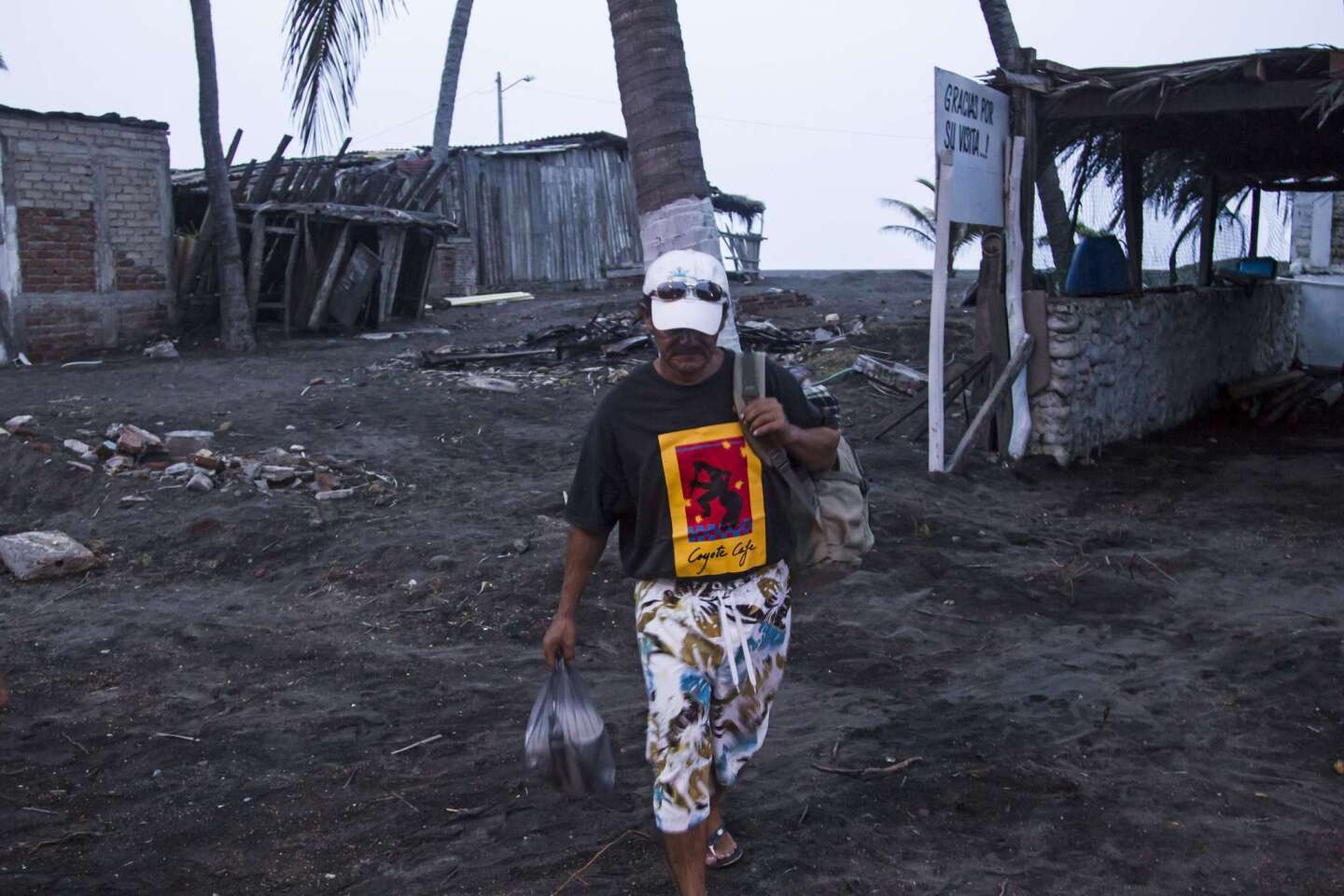Government’s handling of Hurricane Patricia is a rare bit of good news for Mexico
- Share via
Reporting from Manzanillo, Mexico — Skies are clear, highways are flowing with traffic and airports across the western coast of Mexico are open.
The official death count from the strongest hurricane ever measured in the Western Hemisphere: zero.
------------
FOR THE RECORD
Hurricane Patricia: In the Oct. 26 Section A, an article about Hurricane Patricia said that Mexico’s Tamaulipas state is on the country’s western coast. It is on its eastern coast.
------------
Two days after Hurricane Patricia made landfall, packing winds of 165 mph, the toll appears to be limited to flooding and wind damage to houses, power outages and small mudslides that briefly blocked some roadways.
NEWSLETTER: Get the day’s top headlines from Times Editor Davan Maharaj >>
For the Mexican government of President Enrique Peña Nieto, it was a rare bit of good news in a year in which it has sometimes seemed that everything that could go wrong, did. Peña Nieto has been hammered by criticism over his handling of the disappearance of 43 college students and the prison escape of drug cartel leader Joaquin “El Chapo” Guzman, and his administration has been beset by corruption scandals.
But this time, Mexico — and Peña Nieto — benefited from what appears to have been a successful emergency response and extraordinary good luck. Patricia, at one point the strongest hurricane ever measured in the Western Hemisphere, struck land in a relatively remote stretch of Mexico’s Pacific coast and quickly petered out as it hit the coastal mountains.
Visiting this port city late Saturday, Peña Nieto lifted the alert that had been in place in the coastal states of Colima, Jalisco and Nayarit.
He attributed the outcome to government planning and growing experience with natural disasters. “Each of these episodes that we’ve experienced has allowed us each time to improve our system of civil protection,” he told reporters.
In the hours before and after the storm, warnings blared on radio and television broadcasts across the region. Government pickups with loudspeakers circulated through neighborhoods.
Tens of thousands of people evacuated their homes. More than 1,200 shelters were set up. But the fears never materialized.
Peña Nieto’s administration and his Institutional Revolutionary Party, or PRI, have learned some hard lessons over the years from natural disasters.
The most recent probably came in 2013 when Tropical Storm Manuel and Hurricane Ingrid struck Mexico at almost the same time. Manuel came in hard from the south onto the coast of Guerrero, pummeling the popular tourist resort of Acapulco. The next day, Ingrid whirled onto Mexico’s western coast in the state of Tamaulipas.
At least 120 people died as a result of Manuel, many of them in Acapulco’s poor neighborhoods, which suffered intense flooding.
Peña Nieto’s government as well as the state administration of Guerrero came under heavy fire after the storm, accused of not providing adequate warning to residents of Guerrero, or a decent evacuation effort. The state governor at the time, Angel Aguirre, was reported to be out partying rather than mustering the evacuation of residents in high-risk zones.
NEWSLETTER: Get essential California headlines delivered daily >>
The greatest disaster in recent Mexican history predated Peña Nieto’s presidency, but lingers in the national memory as an example of a monumental government failure. When a magnitude 8 earthquake struck in September 1985, the PRI government was paralyzed by the disaster and took days to react.
Thousands of people died, and thousands more were left homeless. Survivors had to dig victims and bodies out of the rubble using their bare hands or whatever tools they could find, and it was days before the authorities accepted humanitarian aid being sent in from abroad.
Experiences such as that no doubt weighed heavy on the minds of officials as they scrambled to prepare for the arrival of Hurricane Patricia on Thursday. This time around, most agree they did a decent job.
“The hurricane put to the test the reaction of all three levels of government,” wrote Ricardo Aleman in his column in the El Universal newspaper Sunday. “And unlike many other occasions, the coordination [this time around] was almost perfect.”
To be sure, the storm caused problems. Between 3,000 and 3,500 homes were damaged or destroyed, authorities said, more than 235,000 people lost electricity for a time, and at least 19,000 acres of crops were ruined by winds and flooding.
Federal and state authorities are conducting a census to fully assess the damage to houses and public infrastructure.
Special correspondent Bonello reported from Mexico City and Times staff writer Zarembo from Manzanillo. Special correspondent Cecilia Sanchez in Manzanillo contributed to this report.
ALSO
More than 100 dead as powerful quake rocks Afghanistan, Pakistan and India
Why presidential debates have become must-see television
Helicopter crash that killed 2 Marines caused by improper maintenance, inquiry shows
More to Read
Sign up for Essential California
The most important California stories and recommendations in your inbox every morning.
You may occasionally receive promotional content from the Los Angeles Times.

